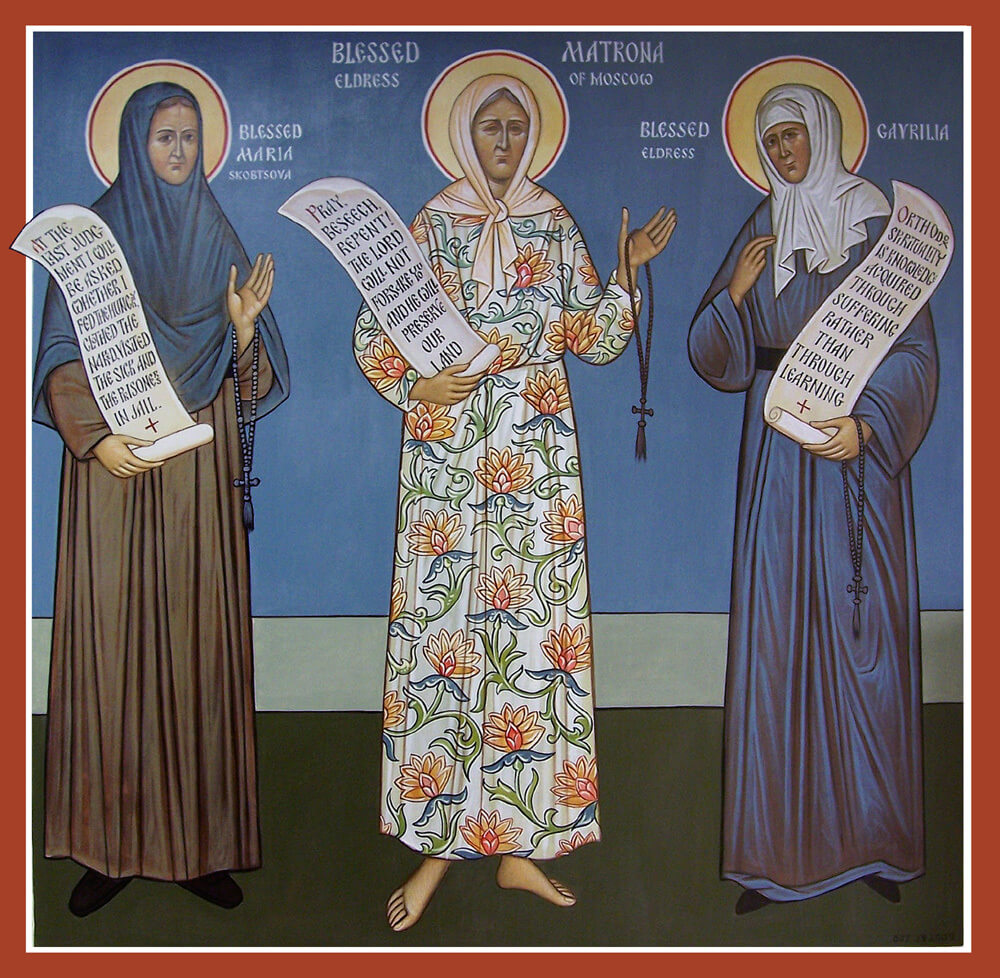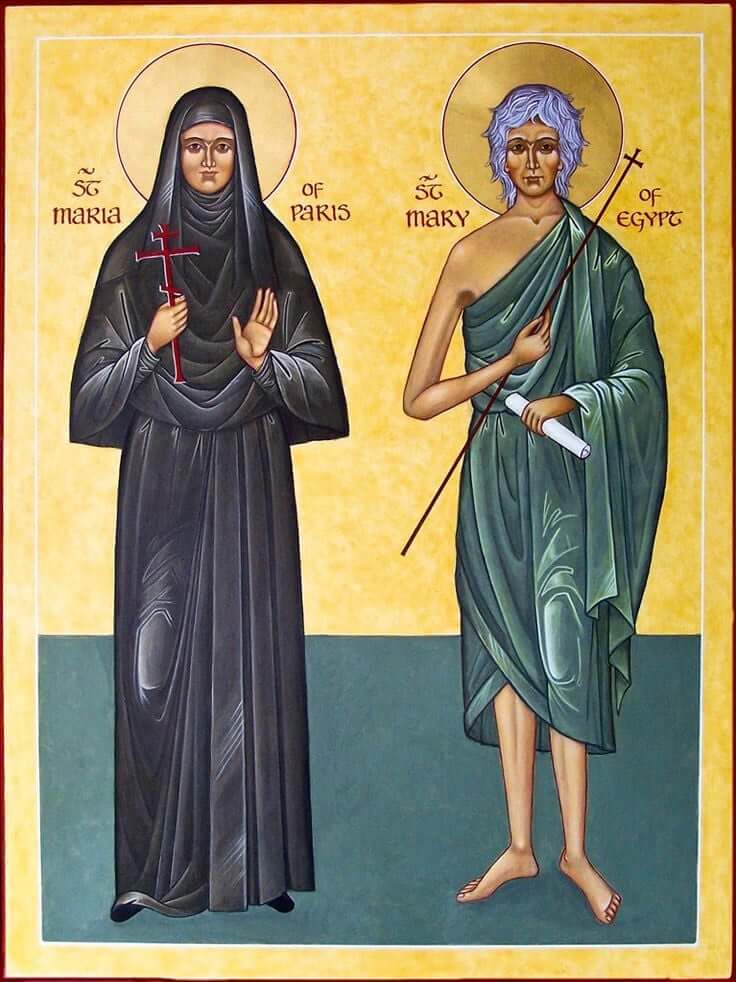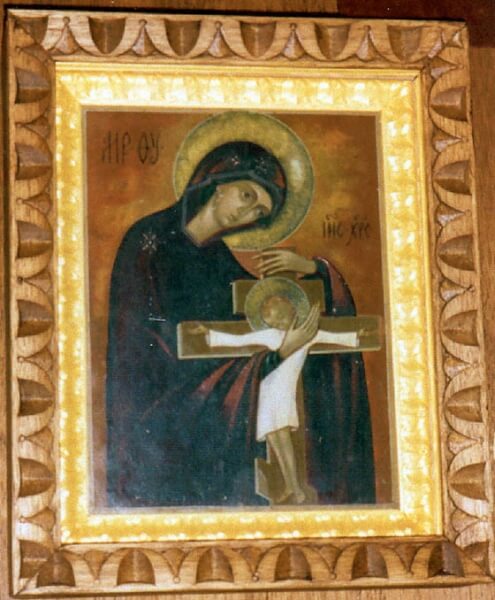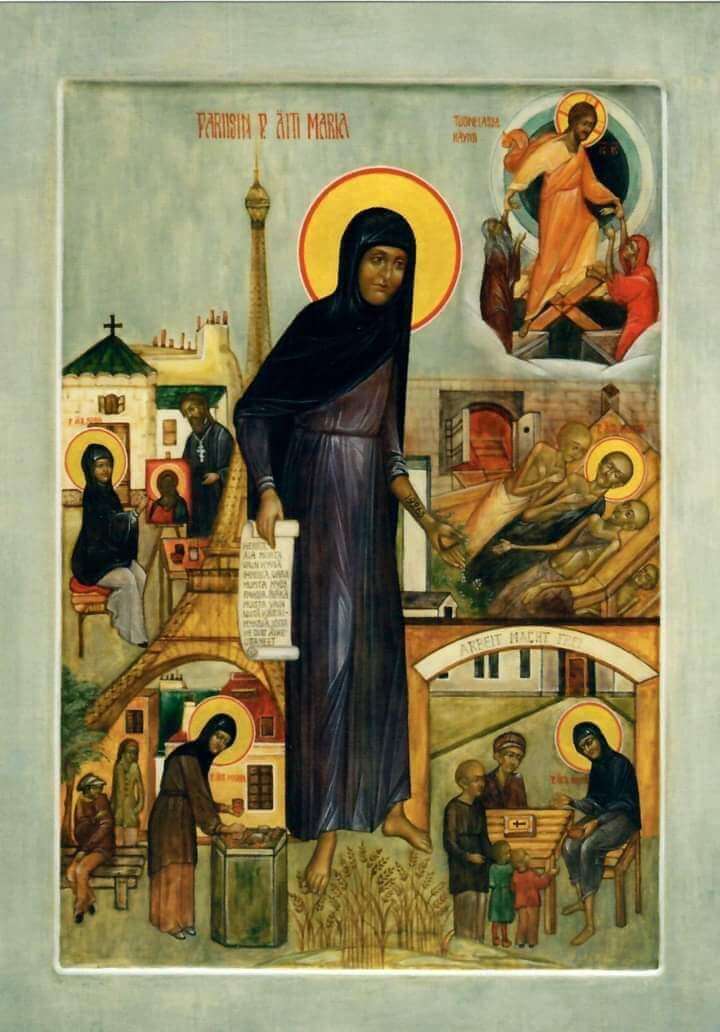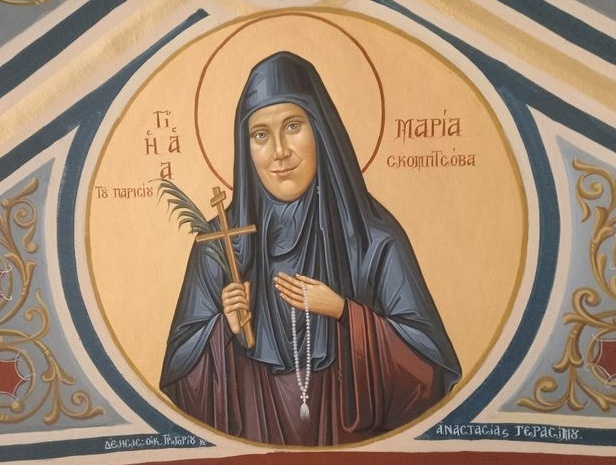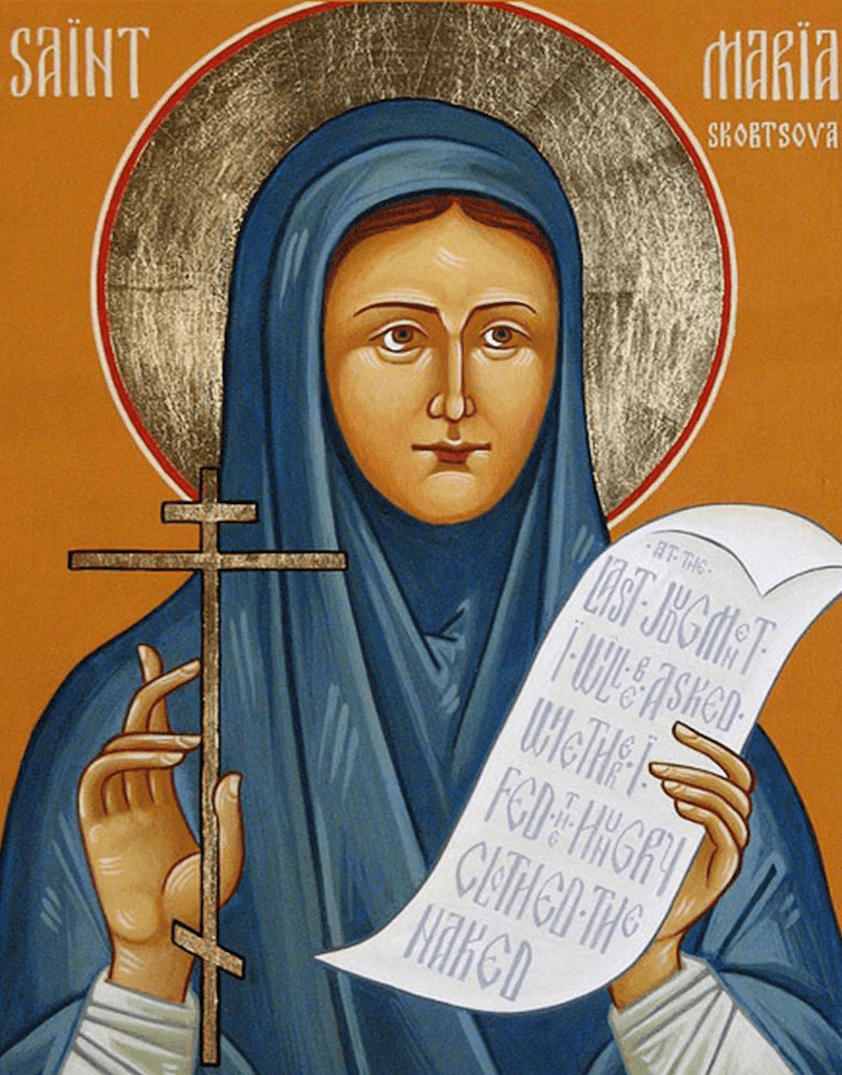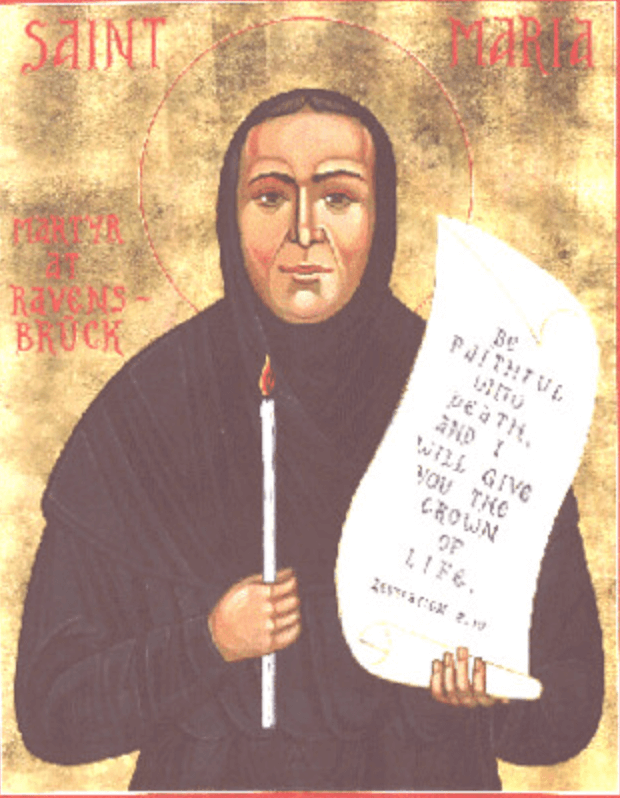Feast Day: July 20th
The Life of Saint Maria and her Companions: She took the place of another prisoner, a Jew, who had been chosen. Although perishing in the gas chamber, she did not perish in the Church’s memory. Survivors of the war who had known her would again and again draw attention to the ideas, insights and activities of the unusual Nun who had spent so many years coming to the aid of people in desperate straights…
+

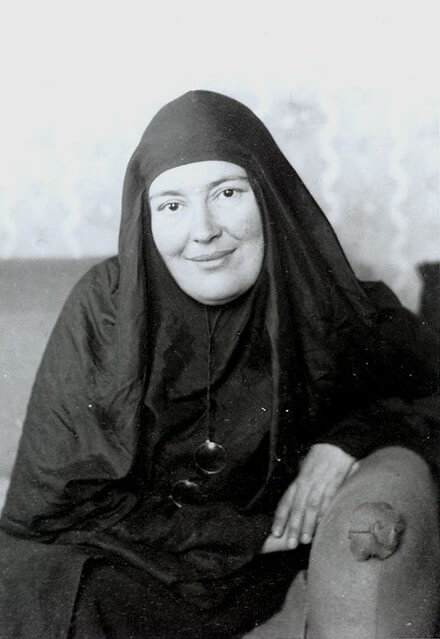


Prayers
Saint Maria of Paris Pray to God for us.
Saint Maria was born in Latvia in 1891 to devout Orthodox parents. One day when she was a young child she emptied her piggy bank to contribute to the painting of an Icon for a new Church in Anapa. When Saint Maria was seven years old she asked her mother if she was old enough to become a Nun, and one year later she asked permission to become a pilgrim who spends her life walking from shrine to shrine. When Saint Maria was fourteen years old, her father died, and she was very distressed with this and said: “If there is no justice, there is no God.”


+
“My spirit longed to engage in heroic feats, even to perish, to combat the injustice of the world.”
Saint Maria was married and once again become closer to God. She loved to Pray, read the Holy Gospel and the Lives of Saints. She wanted to “to proclaim the simple Word of God”, as she realised this is what the people need rather than revolutionary theories. Saint Maria was accepted to study Theology. Not long after, her marriage broke up. She had her first daughter Gaiana and returned to Russia where she wanted to practice ascetic feats so she secretly wore lead weights sewn into a hidden belt. Later on, Saint Maria was put into prison and almost executed.
“My loyalty was not to any imagined government as such, but to those whose need of justice was greatest, the people. Red or White, my position is the same – I will act for justice and for the relief of suffering. I will try to love my neighbour.”
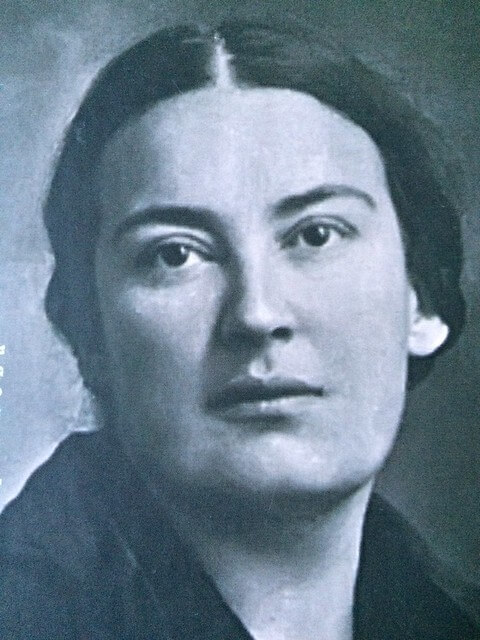


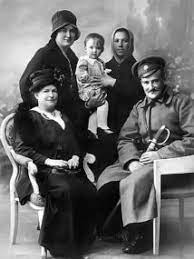
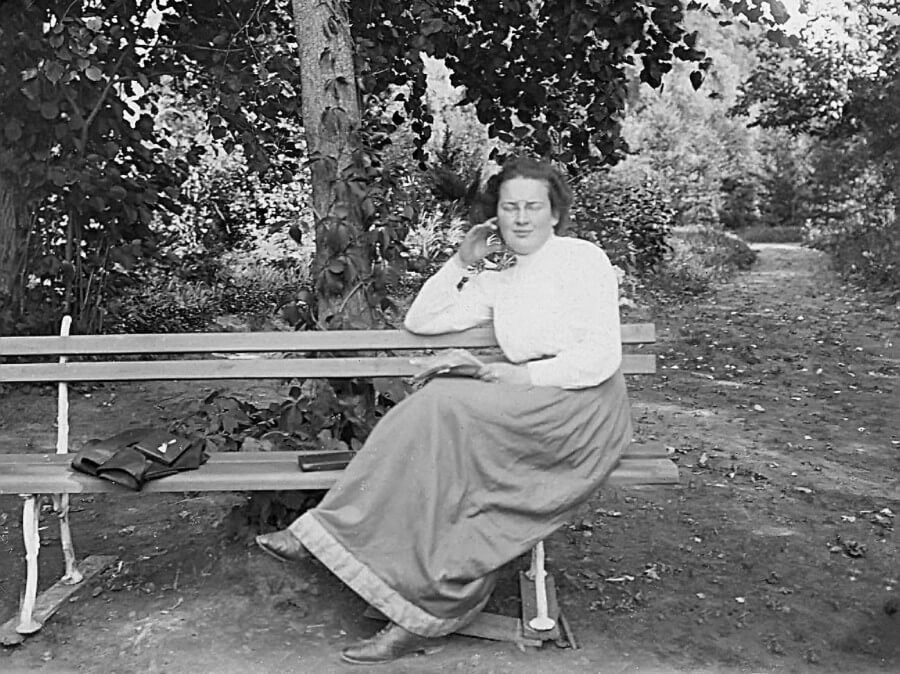
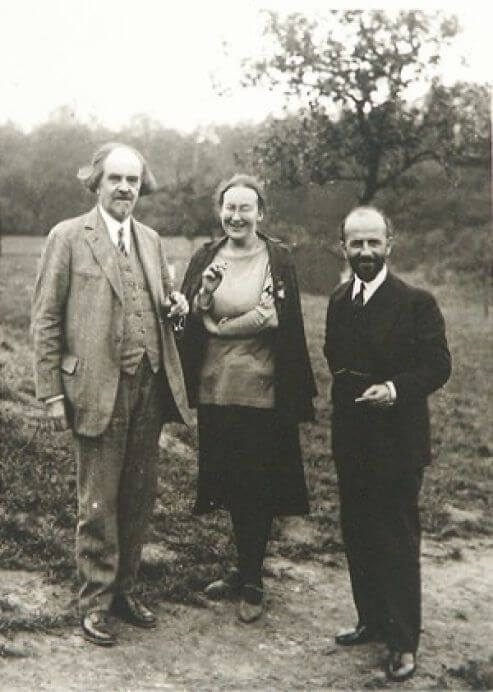
+
“There is no doubt that the Christian is called to social work. He is called to organize a better life for the workers, to provide for the old, to build hospitals, care for children, fight against exploitation, injustice, want, lawlessness.”
Saint Maria gave birth to a son Yuri, and then the following year her daughter Nastya was born. A few years later Nastya died and after her mourning, Saint Maria wanted to devote her time to social work and Theological writing, and to seek a…
“new road before me and a new meaning in life, to be a mother for all, for all who need maternal care, assistance, or protection.”


+
“We must not allow Christ to be overshadowed by any regulations, any customs, any traditions, any aesthetic considerations, or even any piety.”
“Piety, piety, but where is the love that moves mountains?”
“It would be a great lie to tell searching Souls: ‘Go to Church, because there you will find peace.’ The opposite is true. The Church tells those who are at peace and asleep: ‘Go to Church, because there you will feel real anguish for your sins, for your perdition, for the world’s sins and perdition. There you will feel an unappeasable hunger for Christ’s Truth. There, instead of becoming lukewarm, you will be set on fire; instead of pacified, you will become alarmed; instead of learning the wisdom of this world you will become fools for Christ.”
“…[abstinence] is needed mainly to free one’s attention for more valuable things than those from which one abstains. One can introduce a certain unsuitable passion into abstinence – and that is wrong. A person should abstain and at the same time not notice his abstinence.”
Saint Maria was Tonsured a Nun and wanted to live “Monasticism in the world.”

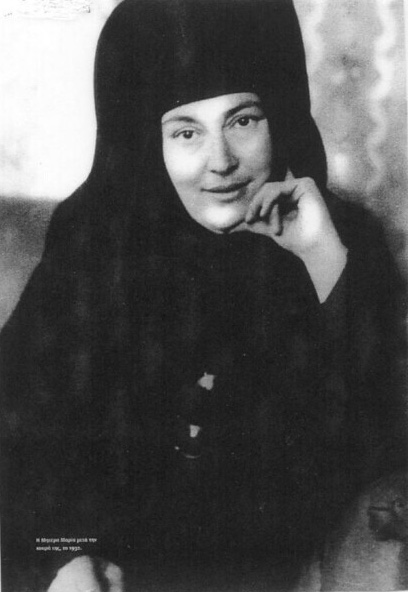

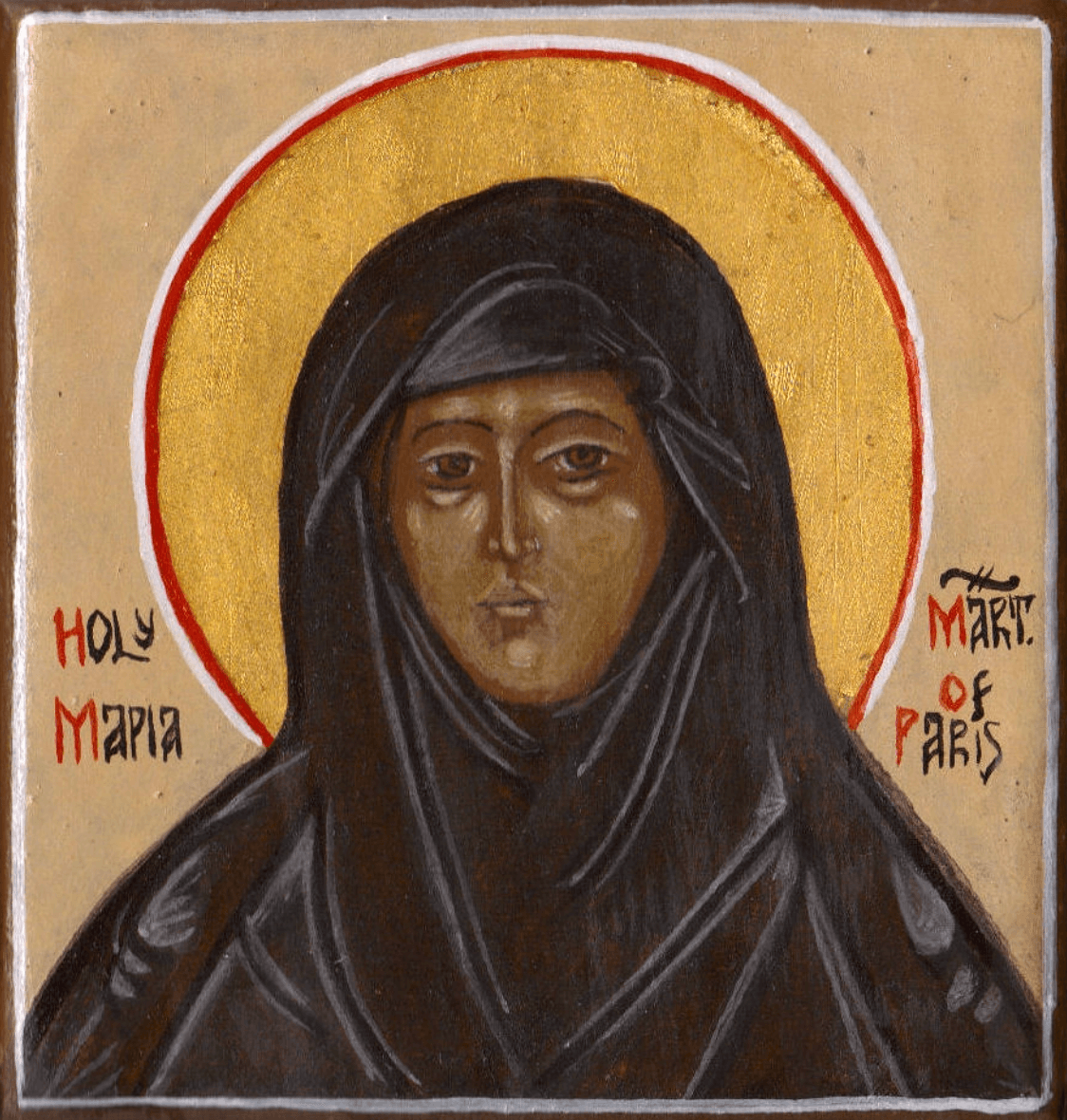
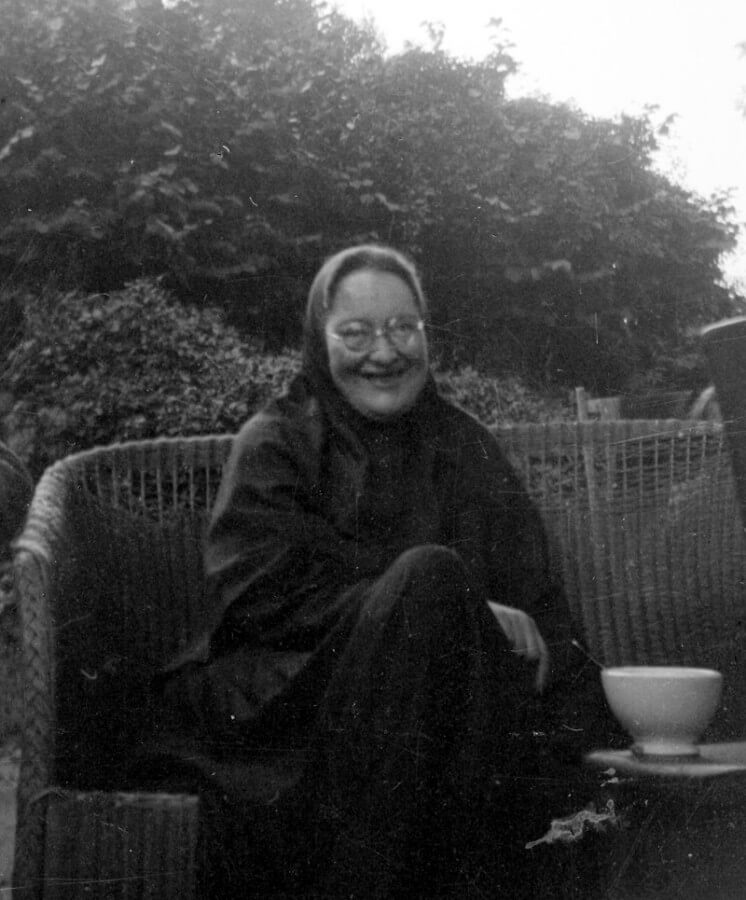

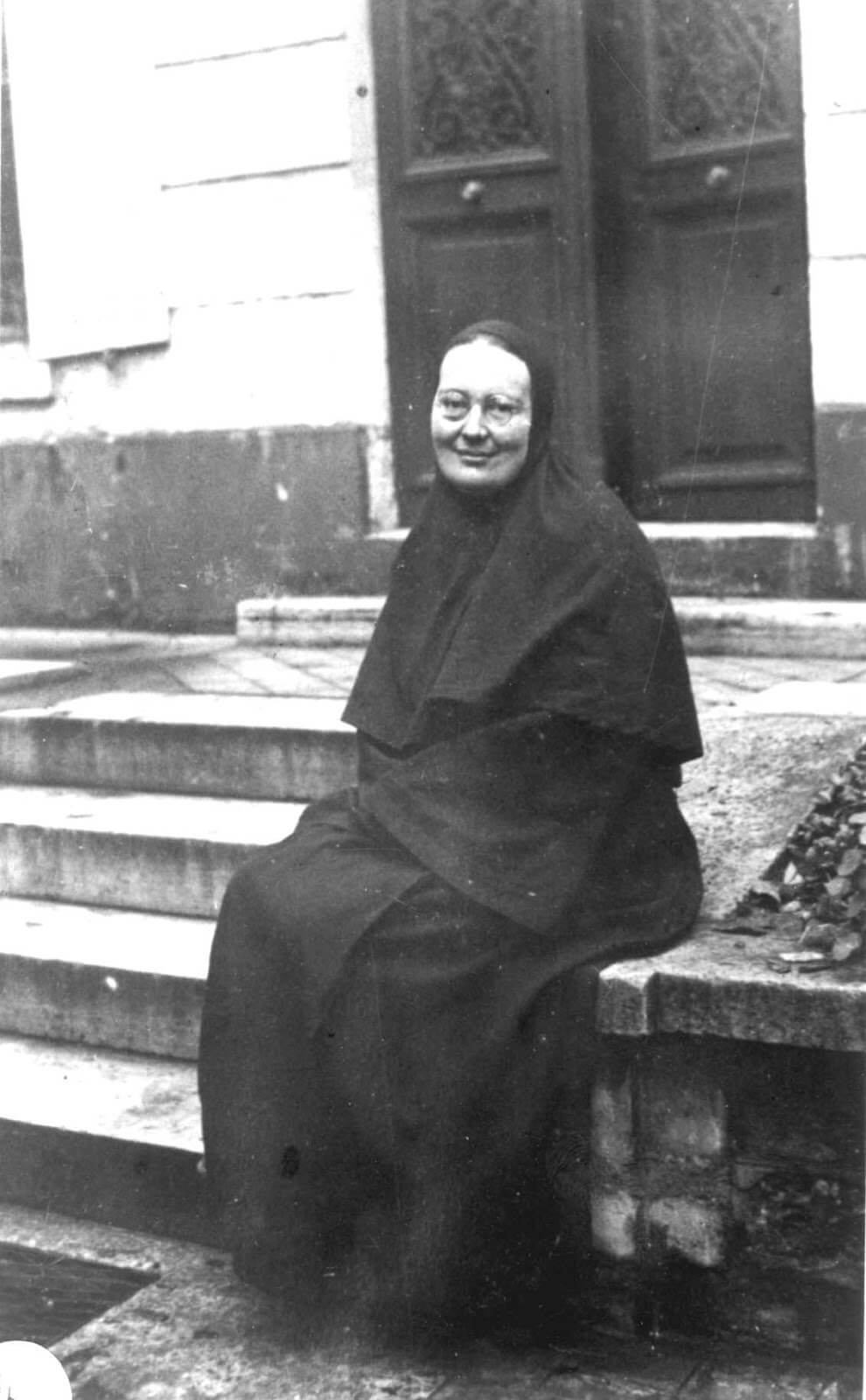
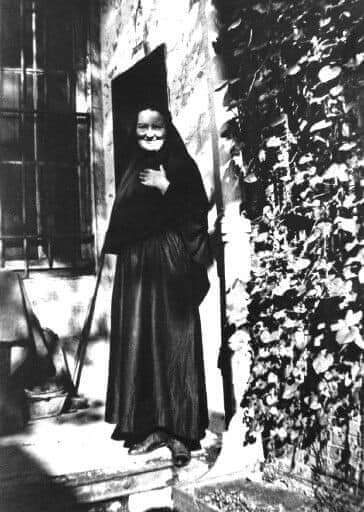
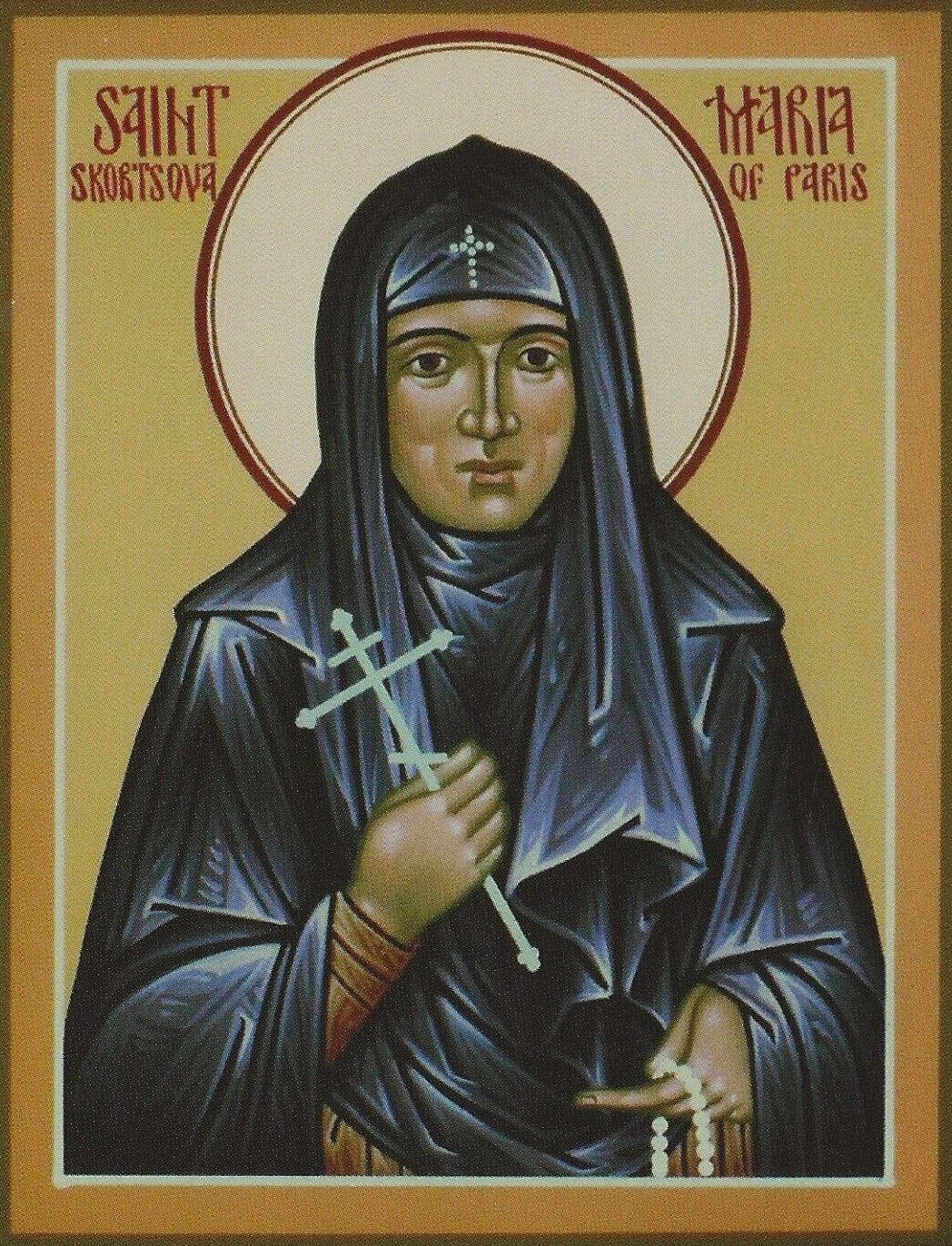
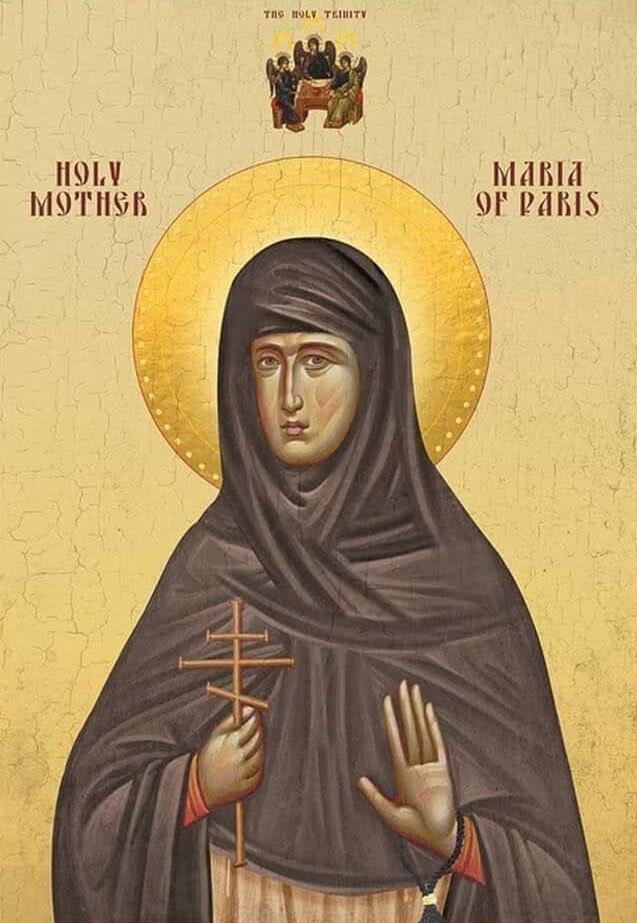
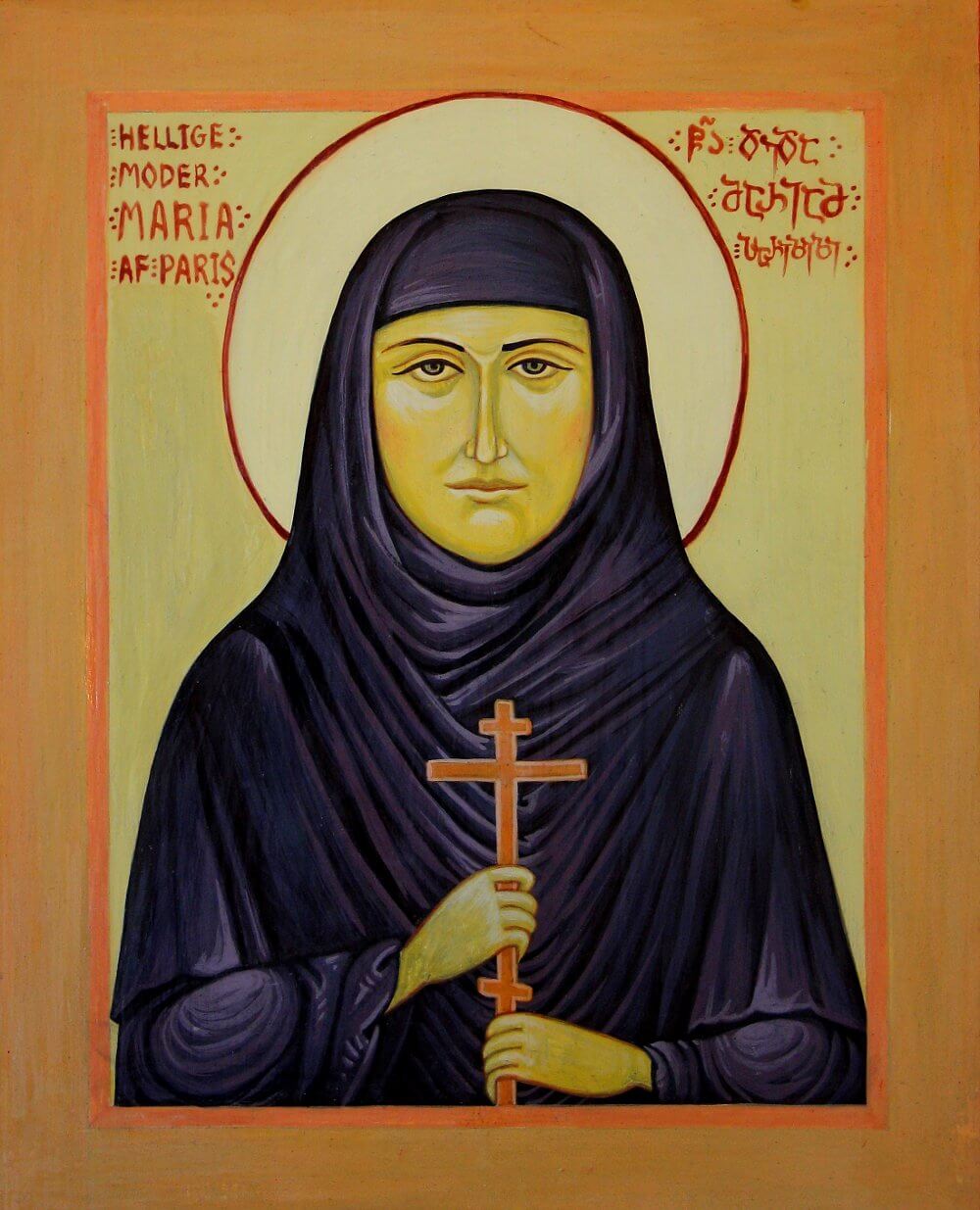
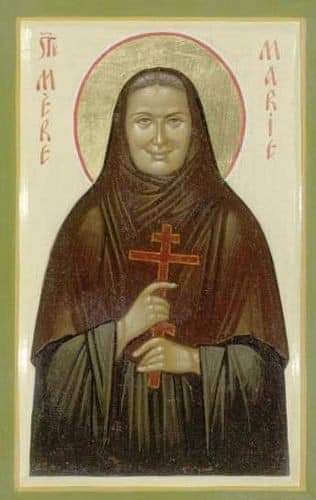

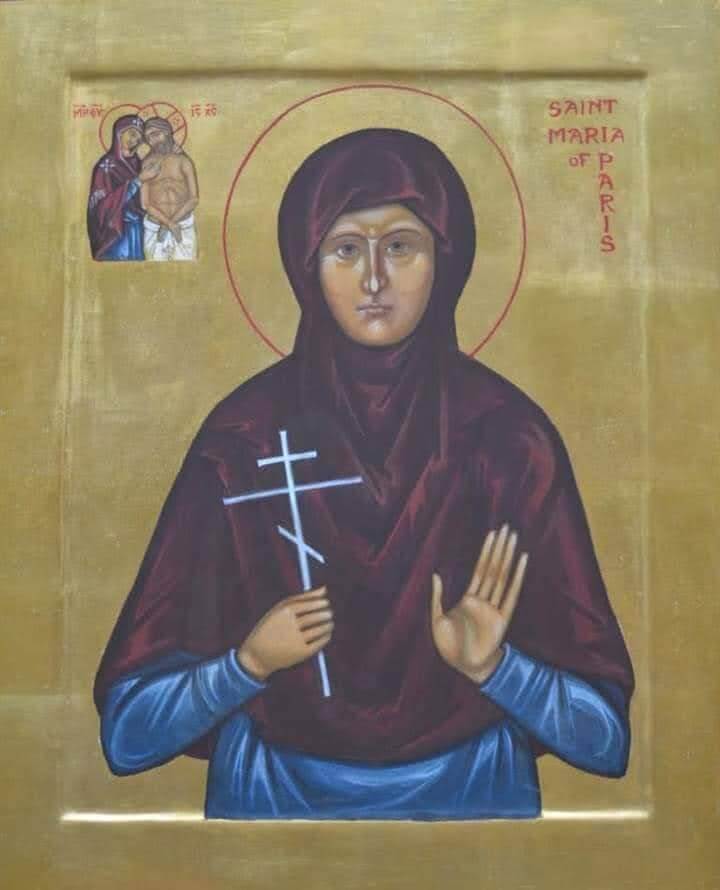

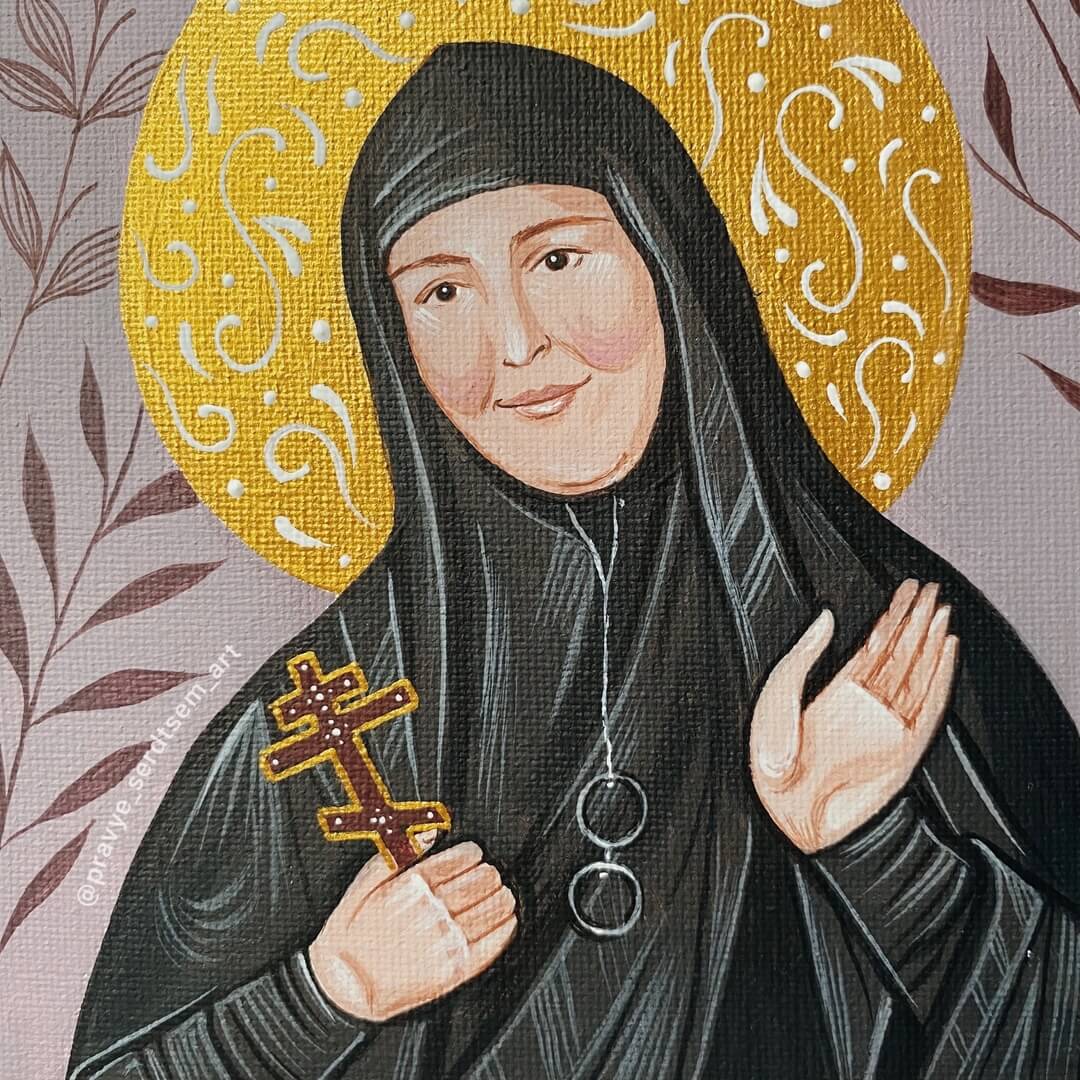
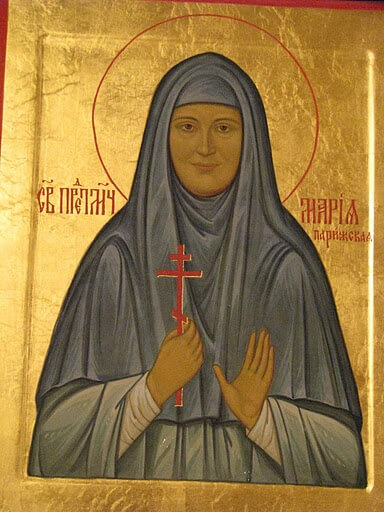

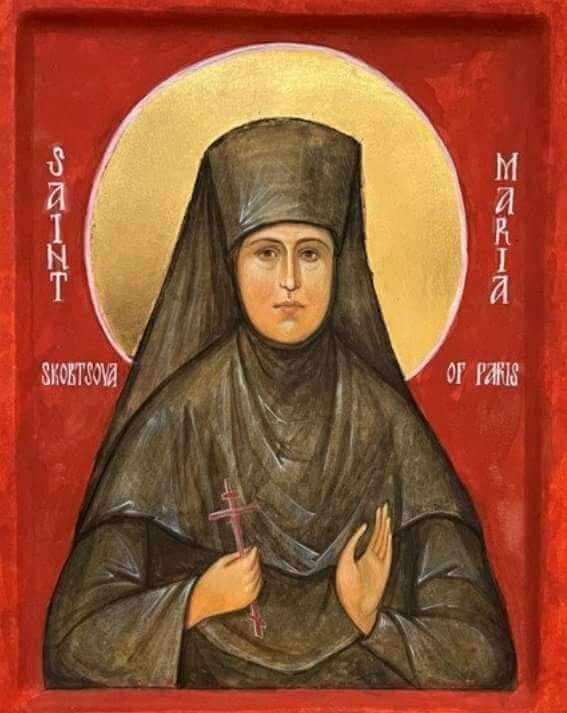
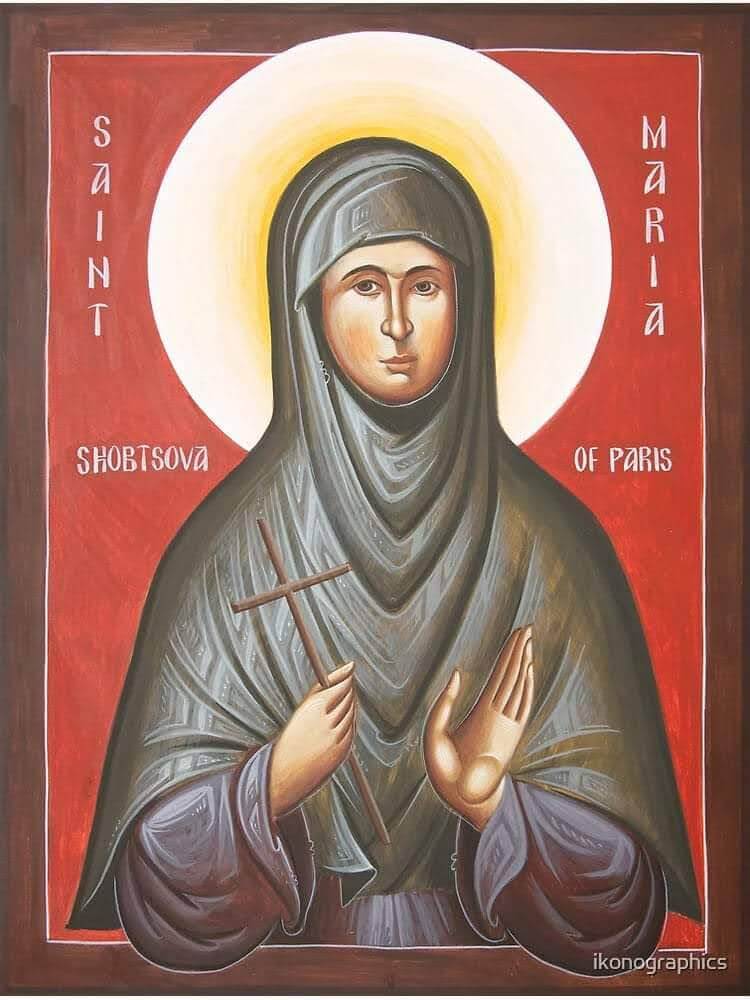
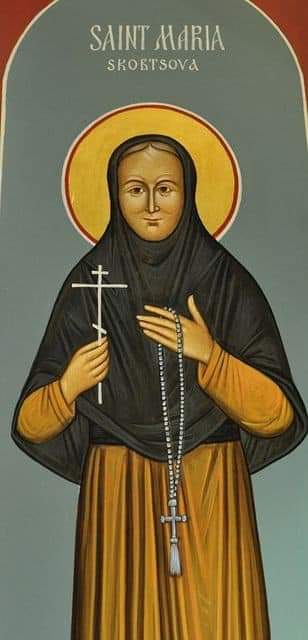

+
“A good woman is like a treasure hidden in a field, waiting to be discovered and cherished. She brings joy and peace to those around her and is a source of light in the darkness.”
Saint Maria received many young Russian women without jobs to provide a place for them to live. She eventually had her house full of survivors of tradegies and she made a room upstairs into a Chapel, and she painted the Icons for the Iconostasis.

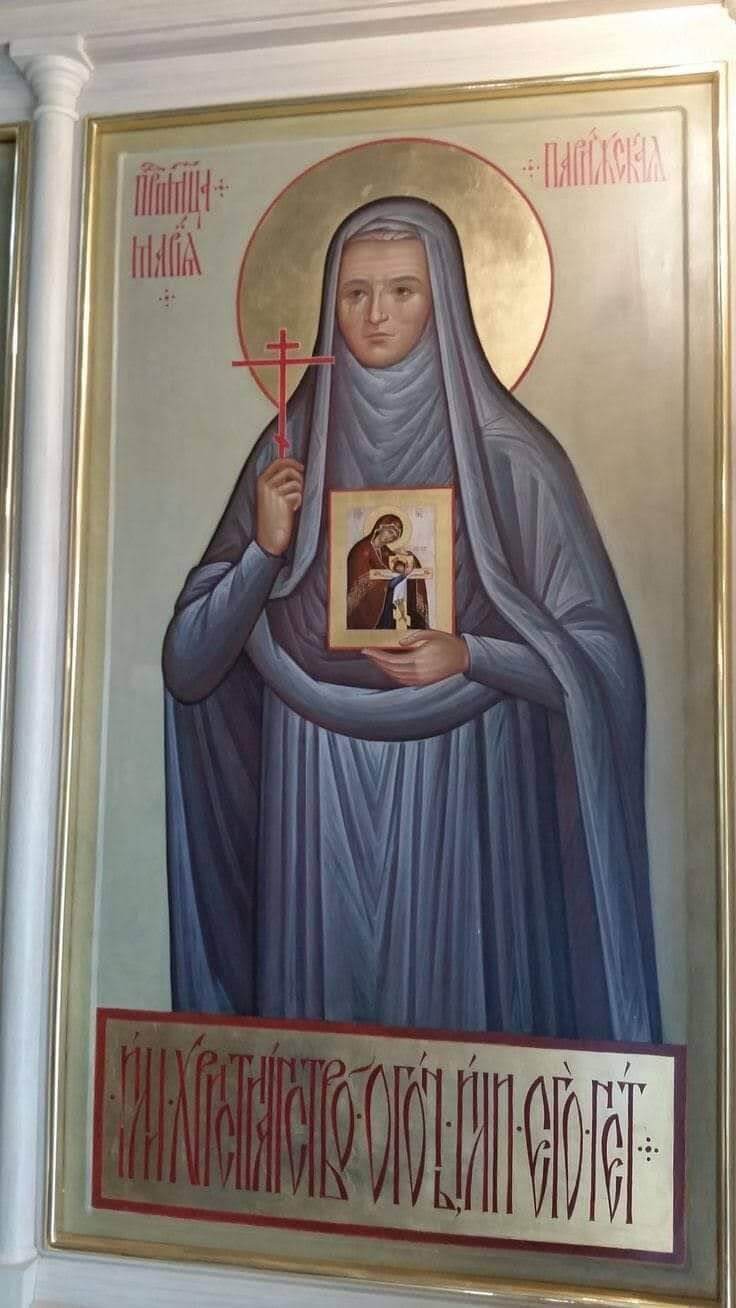
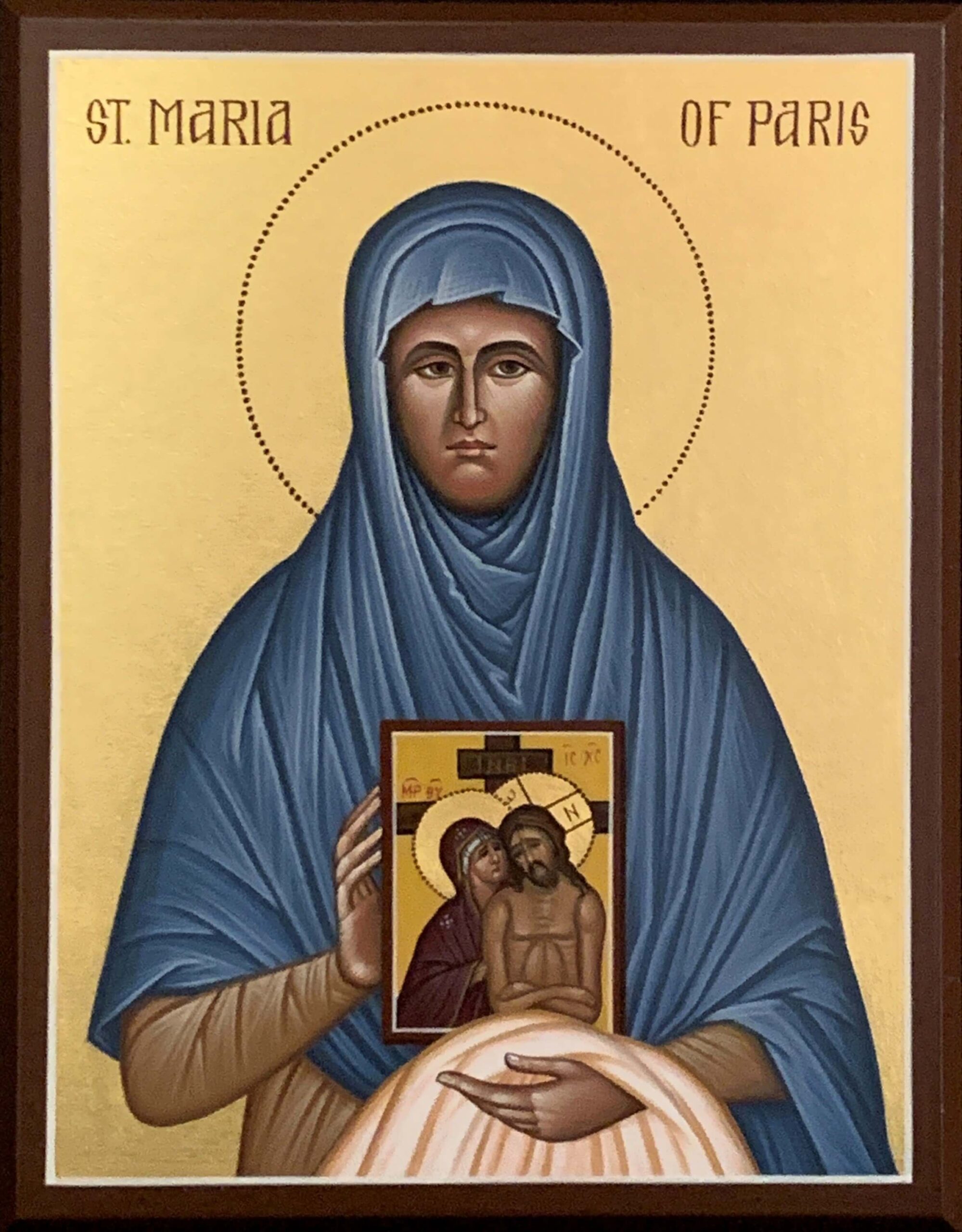
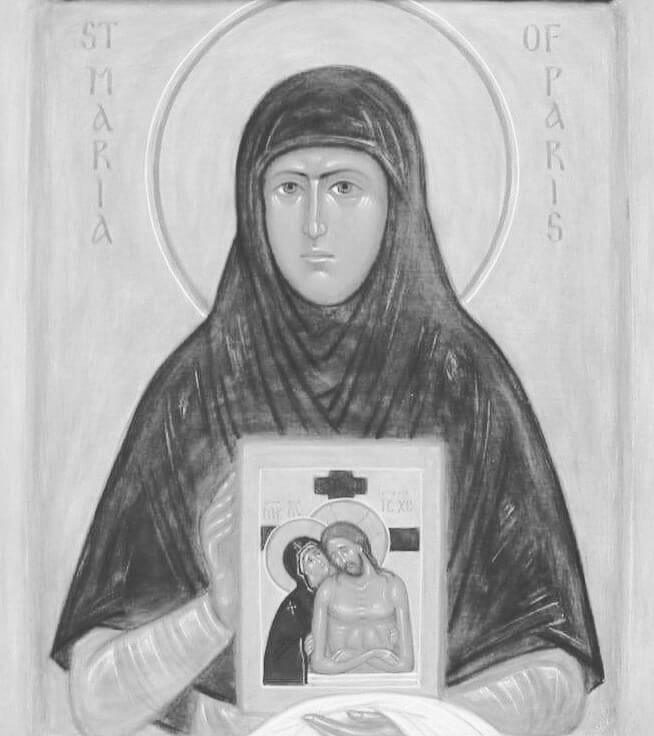

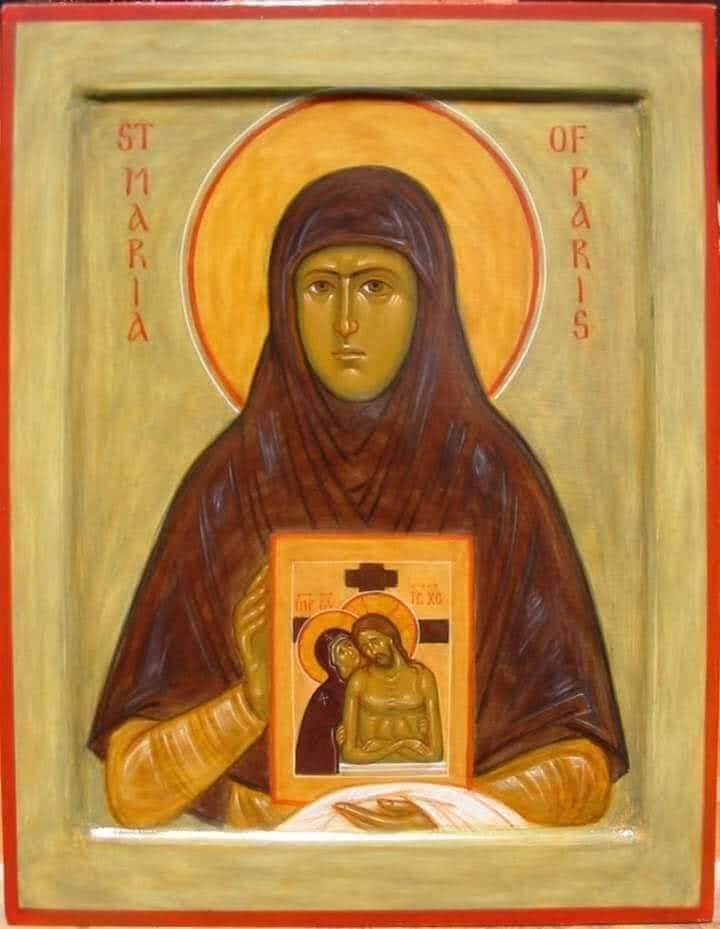
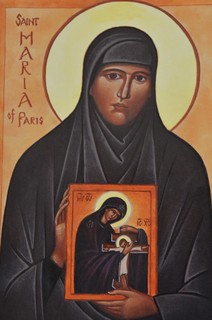
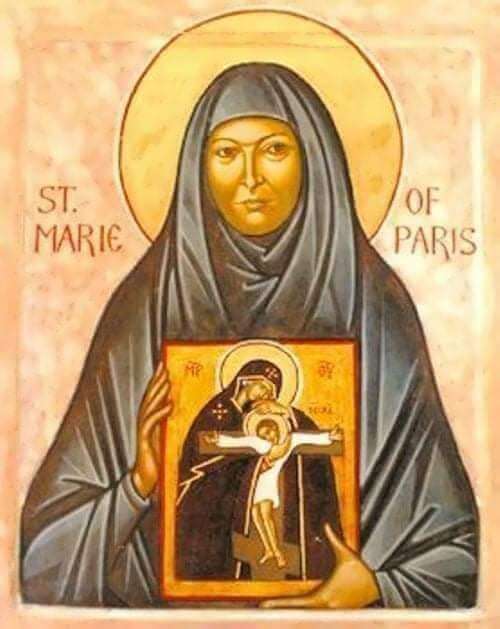
+
“The vocation of hospitality is much more than the provision of food, clothing and a place to sleep. In its depths, it is a contemplative vocation. It is the constant search for the face of Christ in the stranger.”
“The “Churching of life” is the realization of the whole world as one great church, adorned with icons -persons who should be venerated, honoured, and loved, because these icons are true images of God that have the Holiness of the Living God within them.”
She would serve up to 120 dinners each evening, and in the morning she would beg for food or buy whatever she could find that she could afford. Saint Maria would go out actively seeking the homeless and cared for many children too, also opening schools for them and clinics to care for the health of people. She also visited mental hospitals, and a lot of the patients were released because of her intervention due to the language and cultural barriers.

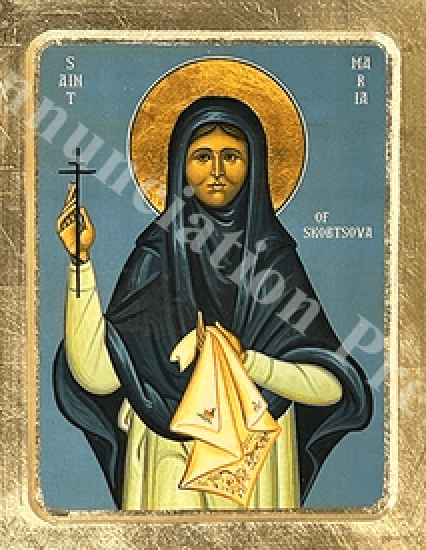
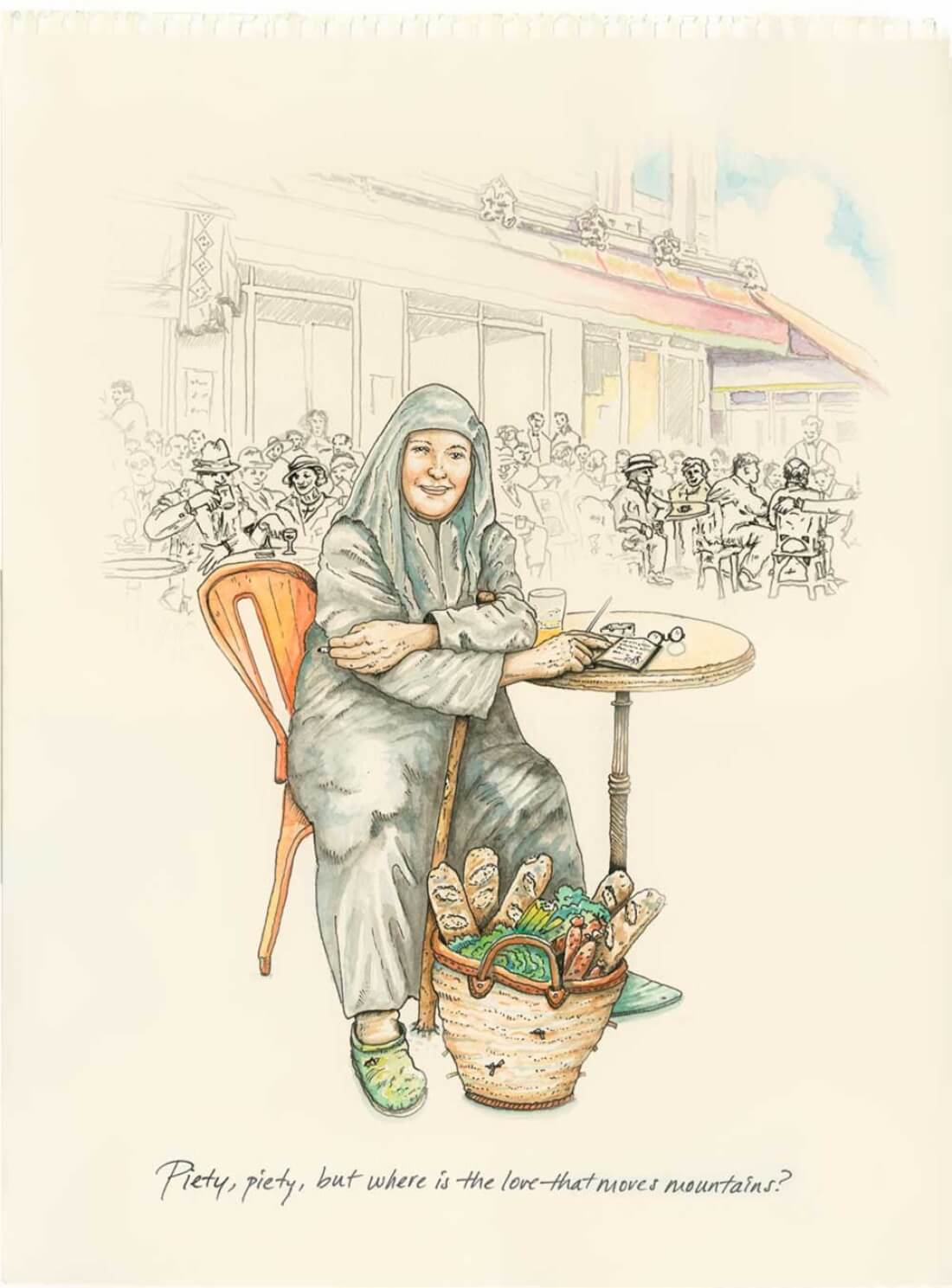
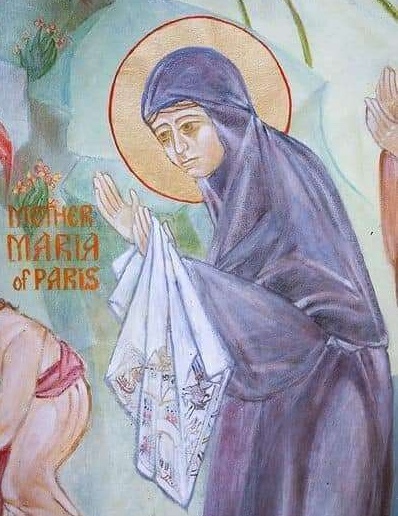
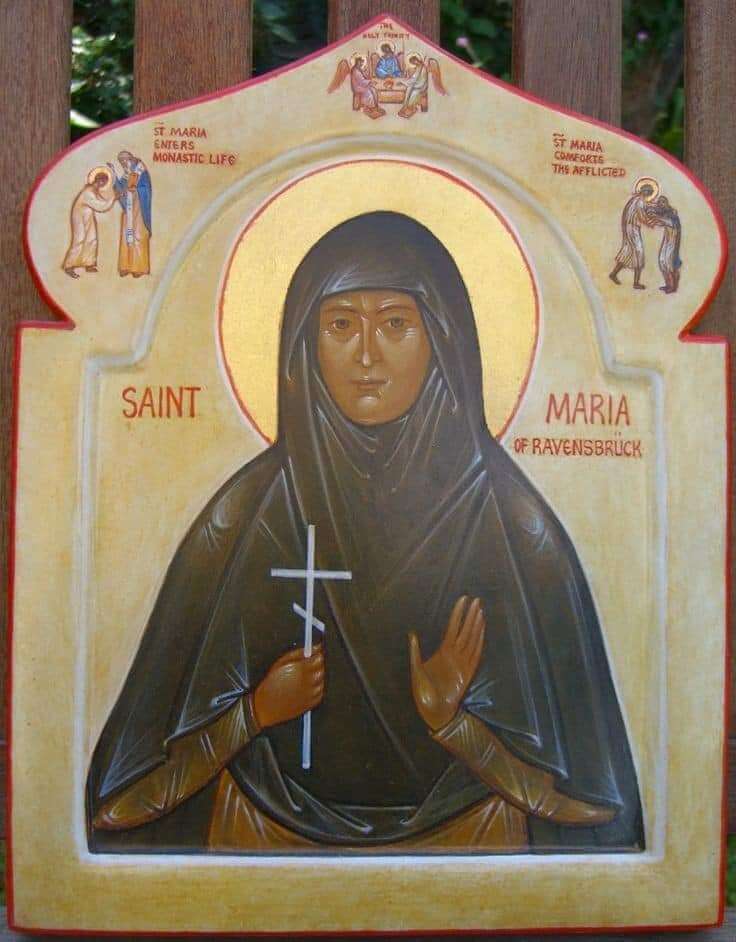

+
“Love is a very dangerous thing. At times it must reach down into the fathomless lower levels of the human spirit, it must expose itself to ugliness, to the violation of harmony.”
“Christ, Who approached prostitutes, tax collectors and sinners, can hardly be the Teacher of those who are afraid to soil their pristine garments, who are completely devoted to the letter, who live only by the rules, and who govern their whole life according to the rules.”
On one occasion a guest stole 25 francs. Everyone guessed who the culprit was, a drug addict, but Mother Maria refused to accuse her. Instead she announced at the dinner table that the money had not been stolen, only misplaced, and she had found it. “You see how dangerous it is to make accusations,” she commented. At once the girl who stole the money burst into tears.
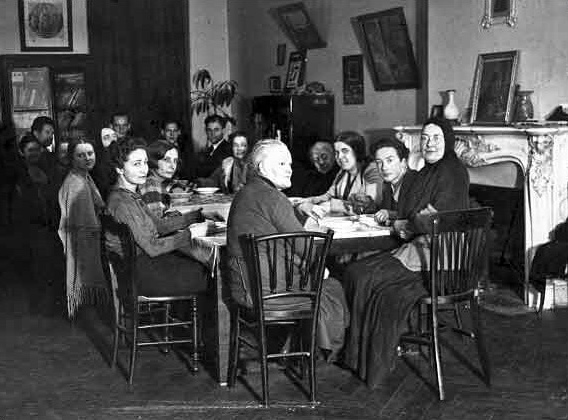


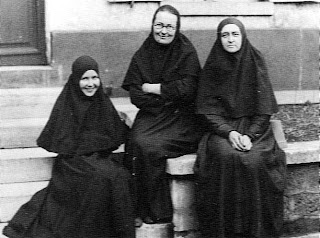
+
“If the Germans take Paris, I shall stay here with my old women. Where else could I send them?”
Father Dimitri Klepinin began to assist Saint Maria during the time of World War 2 and the Nazi threat, but she continued to assist everyone. A great number of Jews were arrested and brought to a stadium for five days before being sent to Auschwitz. Saint Maria spent three days with them, comforting them and giving them food. She also rescued some children by smuggling them out in garbage bins. Yuri, Father Dimitri and Saint Maria were soon interrogated.
Yuri was watching Father Dimitri being prod and beaten by an officer and began to weep, Father Dimitri consoled him saying: “Christ withstood greater mockery than this.”
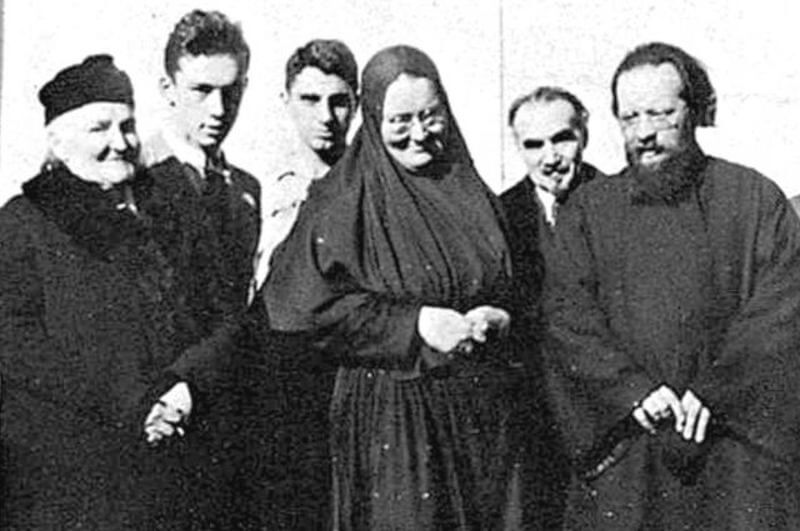

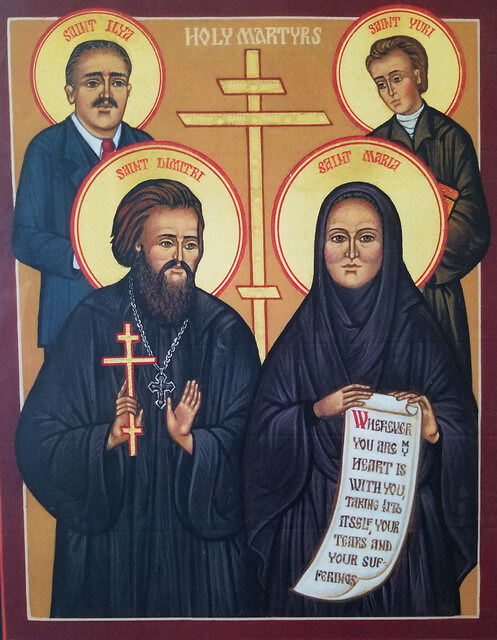

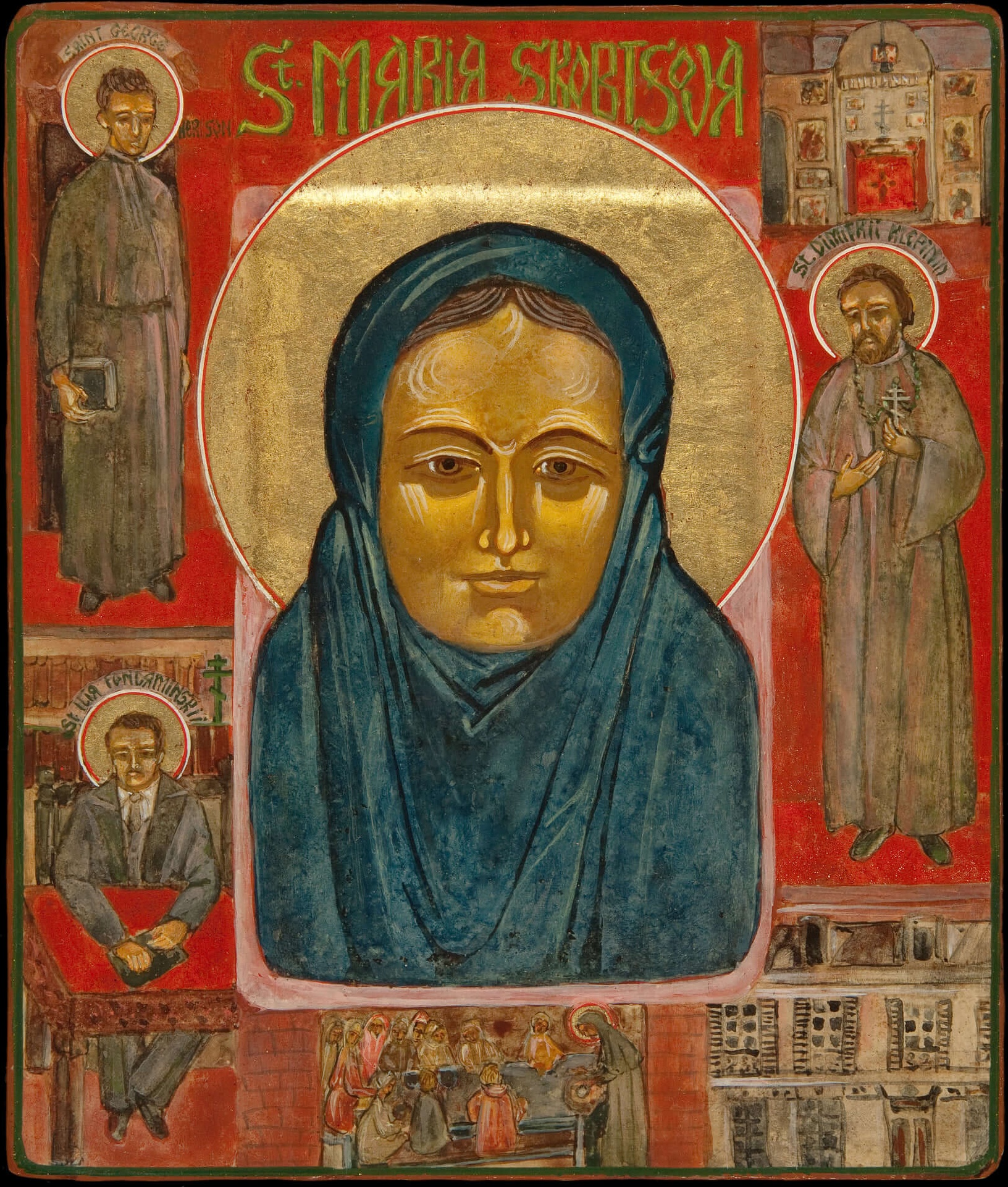

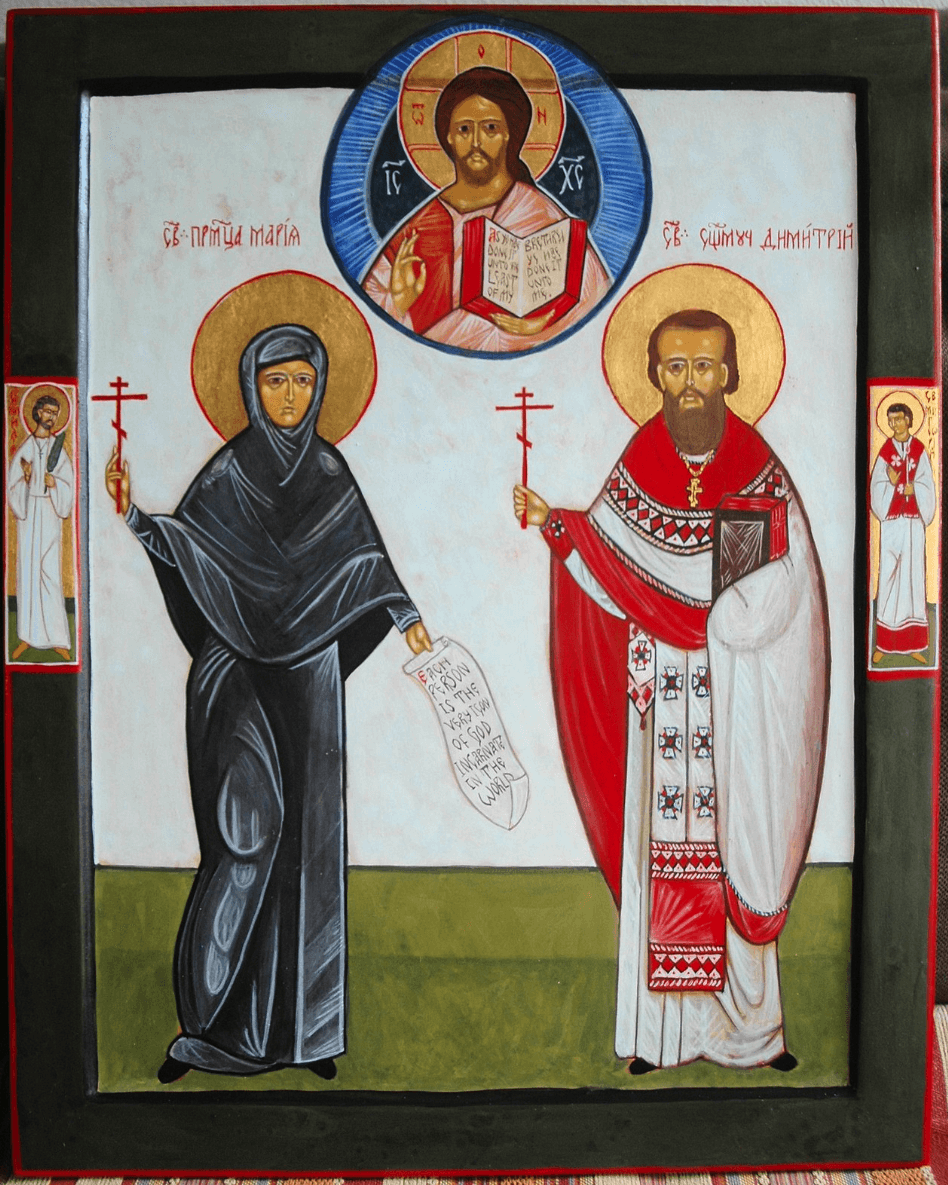
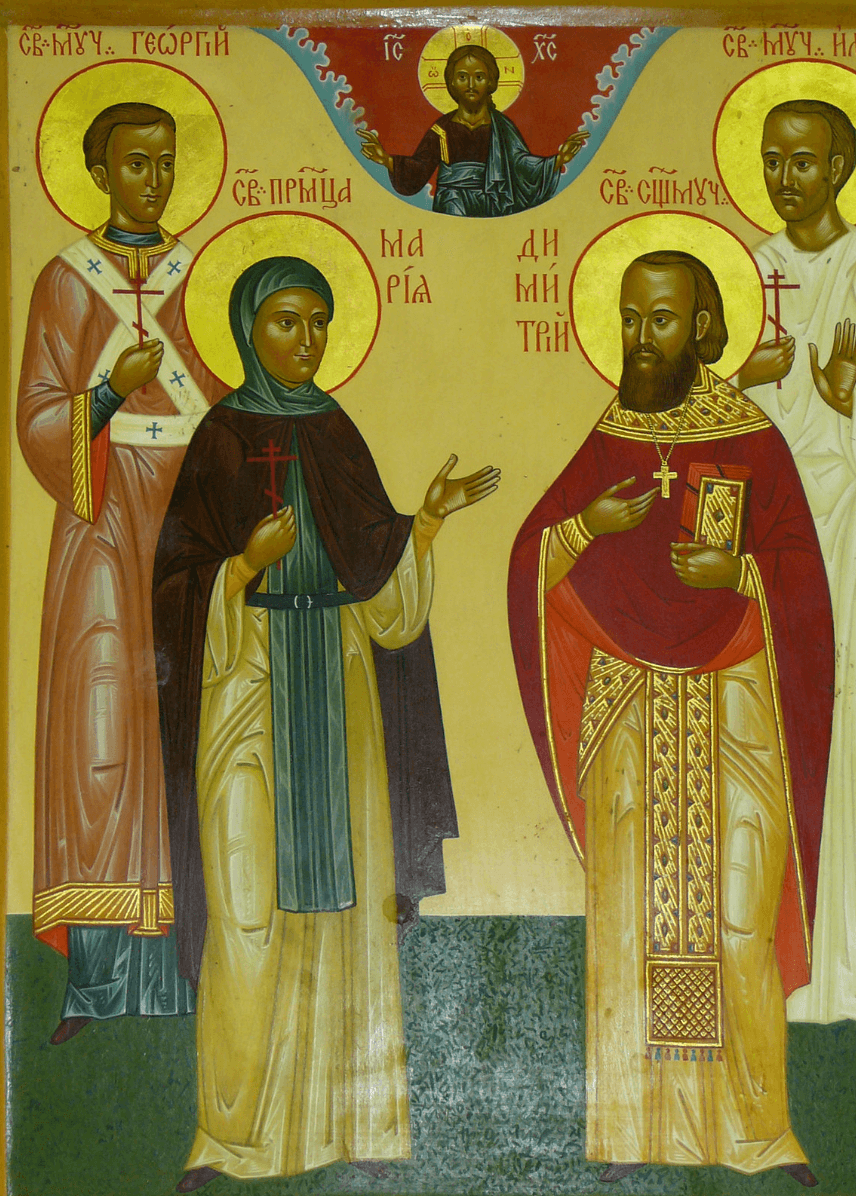

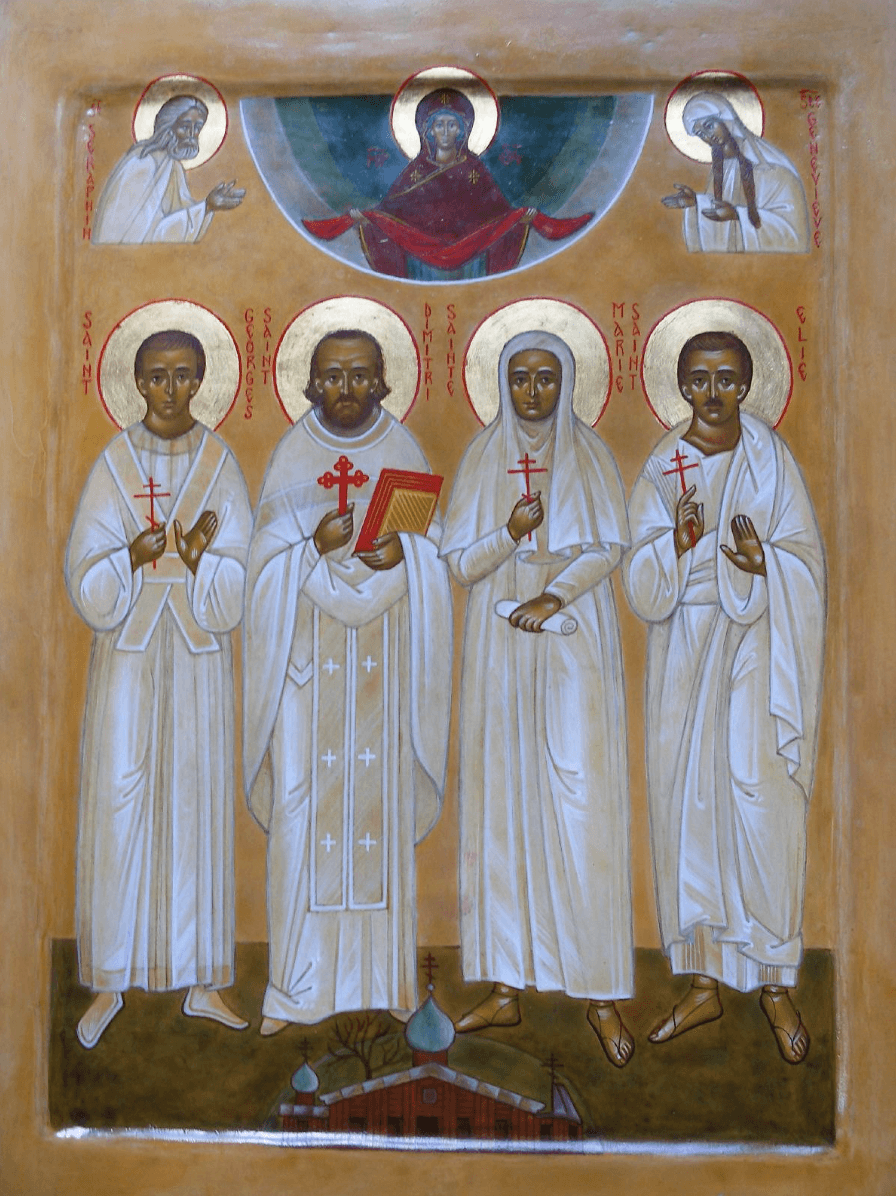
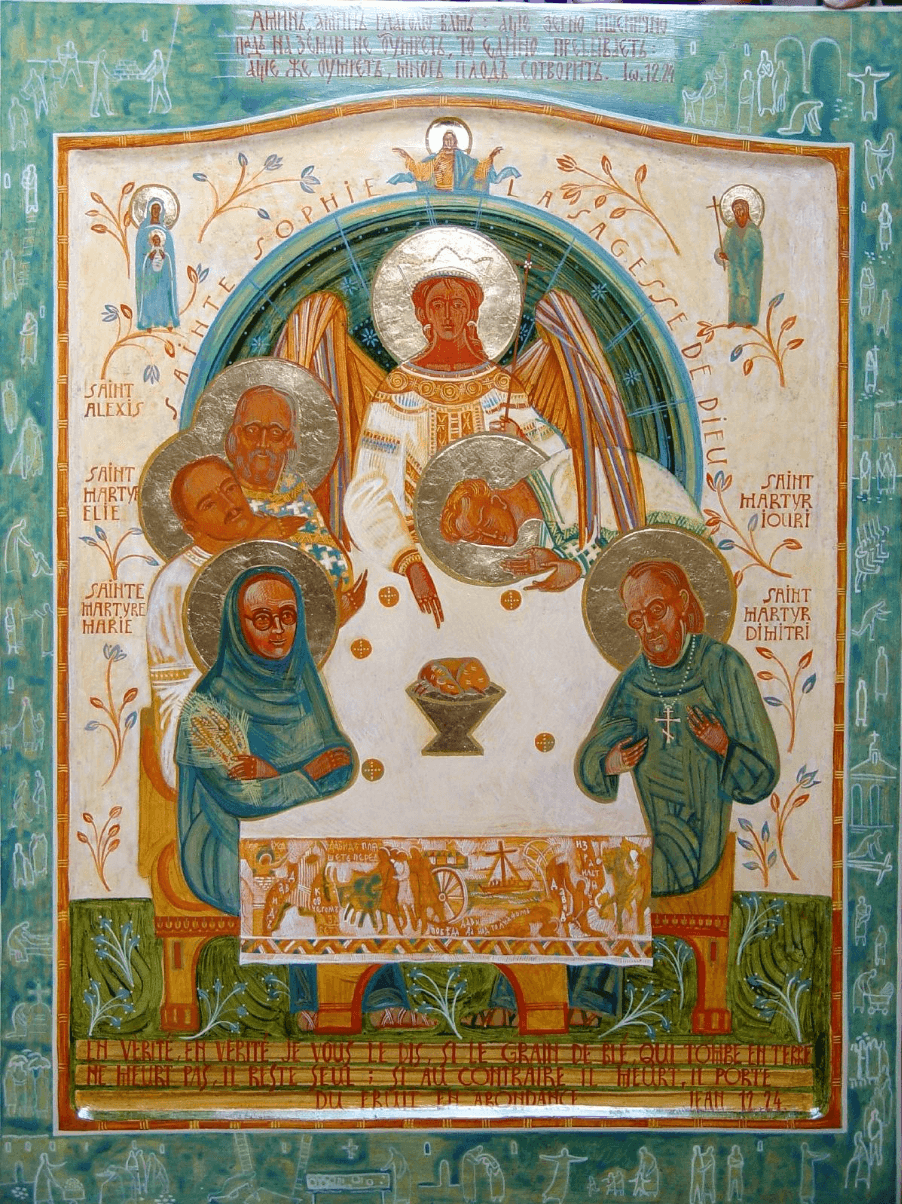
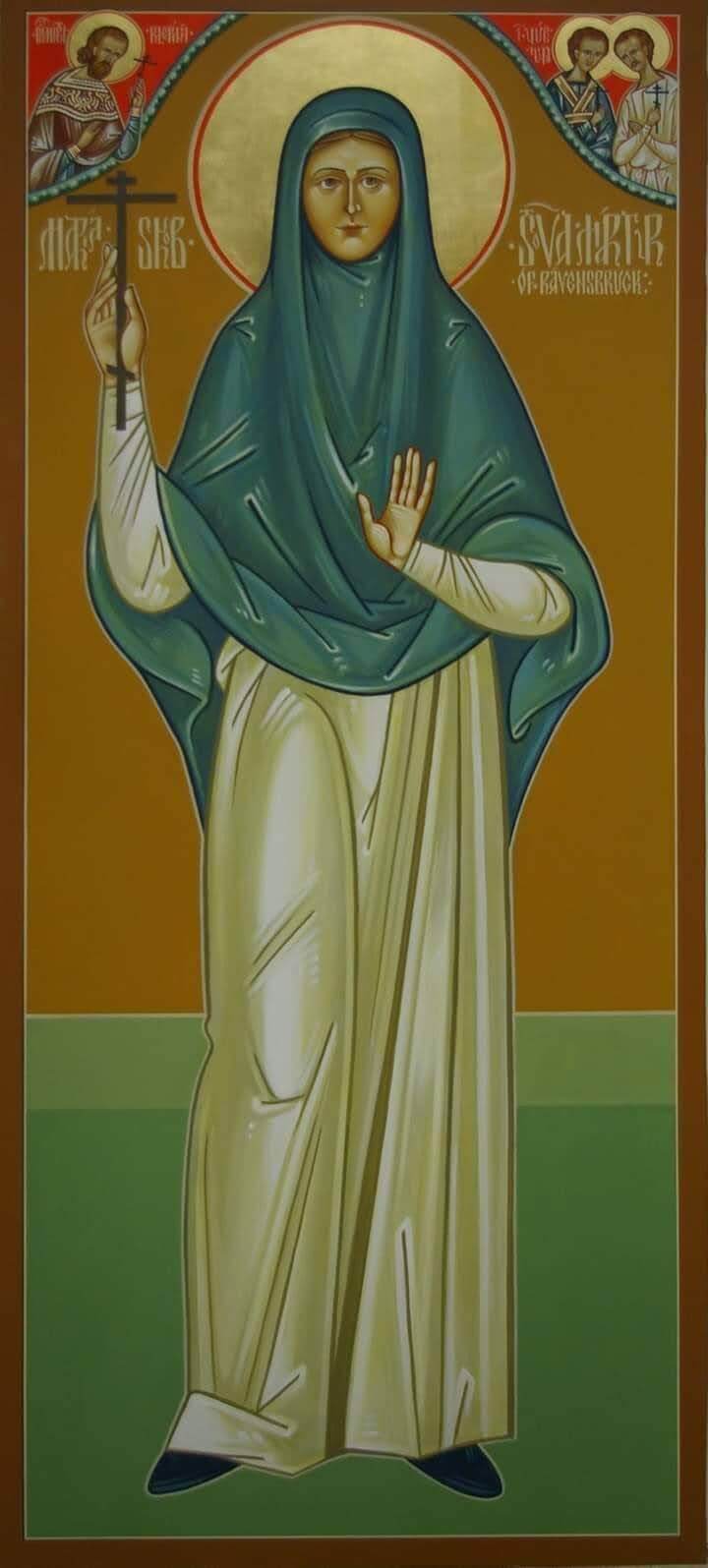
+
Saint Maria was taken to Germany as a prisoner. A fellow prisoner who survived recalled that “She was never downcast, never. She never complained… She was full of good cheer, really good cheer. We had roll calls which lasted a great deal of time. We were woken at three in the morning and we had to stand out in the open in the middle of winter until the barracks [population] was counted. She took all this calmly and she would say, ‘Well that’s that. Yet another day completed. And tomorrow it will be the same all over again.’… She allowed nothing of secondary importance to impede her contact with people.” At the camp she went through a period of time where she had to drag a heavy iron roller for 12 hours a day with a group of other women. At another time she worked in a kintwear shop. Her legs began to give way and her health declined, and her friends at the camp no longer accepted her food she would give them but made sure she would eat her portion.
“Man ought to treat the body of his fellow human being with more care than he treats his own, Christian love teaches us to give our fellows material as well as Spiritual gifts. We should give them our last shirt and our last piece of bread. Personal almsgiving and the most wide-ranging social work are both equally justified and needed.”
+
Knowing that she would soon be put into the crematoria, Saint Maria asked a fellow prisoner to memorise a message for her mother and Metropolitan:
“My state at present is such that I completely accept suffering in the knowledge that this is how things ought to be for me, and if I am to die, I see this as a blessing from on High.”
On Great and Holy Friday of 1945, Saint Maria was selected to go into the gas chambers, and she gave her Soul to God in there on Great and Holy Saturday. Witnesses say she took the place of another prisoner, a Jew, who had been chosen. She remained in the memory of the Church as survivors of the war would speak of her as the unusual Nun who spent so many years helping people in desperate situations.
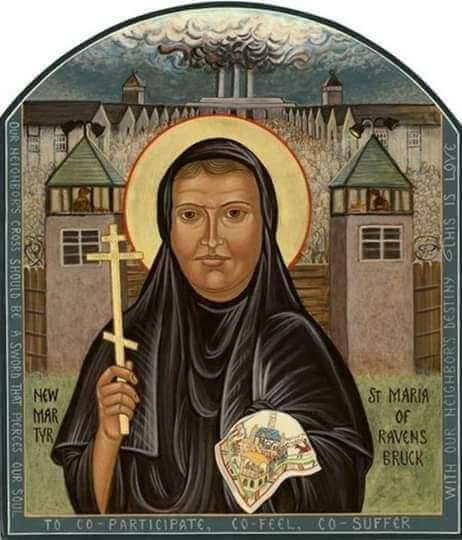

“Each person is the very icon of God Incarnate in this world.”


+
“However hard I try, I find it impossible to construct anything greater than these three words, ‘Love one another’ – only to the end, and without exceptions: then all is justified and life is illumined, whereas otherwise it is an abomination and a burden.”

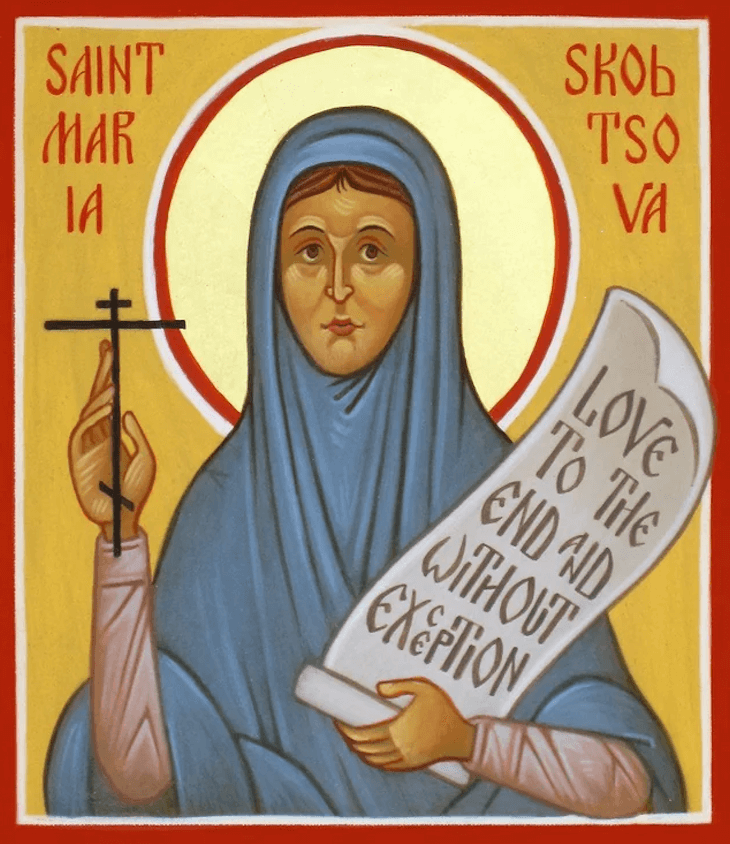
+
“The way to God lies through love of people. At the Last Judgement I shall not be asked whether I was successful in my Ascetic exercises, nor how many bows and prostrations I made. Instead I shall be asked, did i feel the hungry, clothe the naked, visit the sick and the prisoners. That is all I shall be asked. About every poor, hungry, and imprisoned person the Saviour says “I”; “I was hungry, and thirsty, I was sick and in prison…”
+
“And finally I know with all my being that at this very moment God is visiting His World.”
+
Be faithful unto death and I will give you the Crown of Life.
+
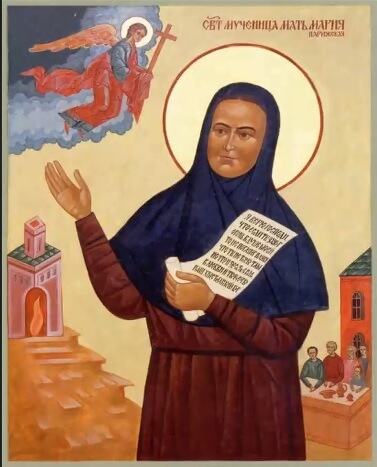
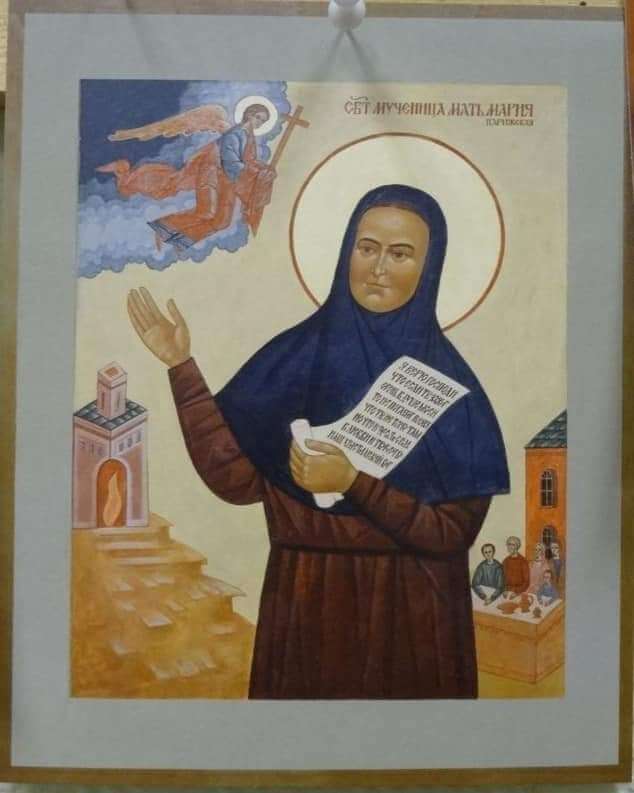
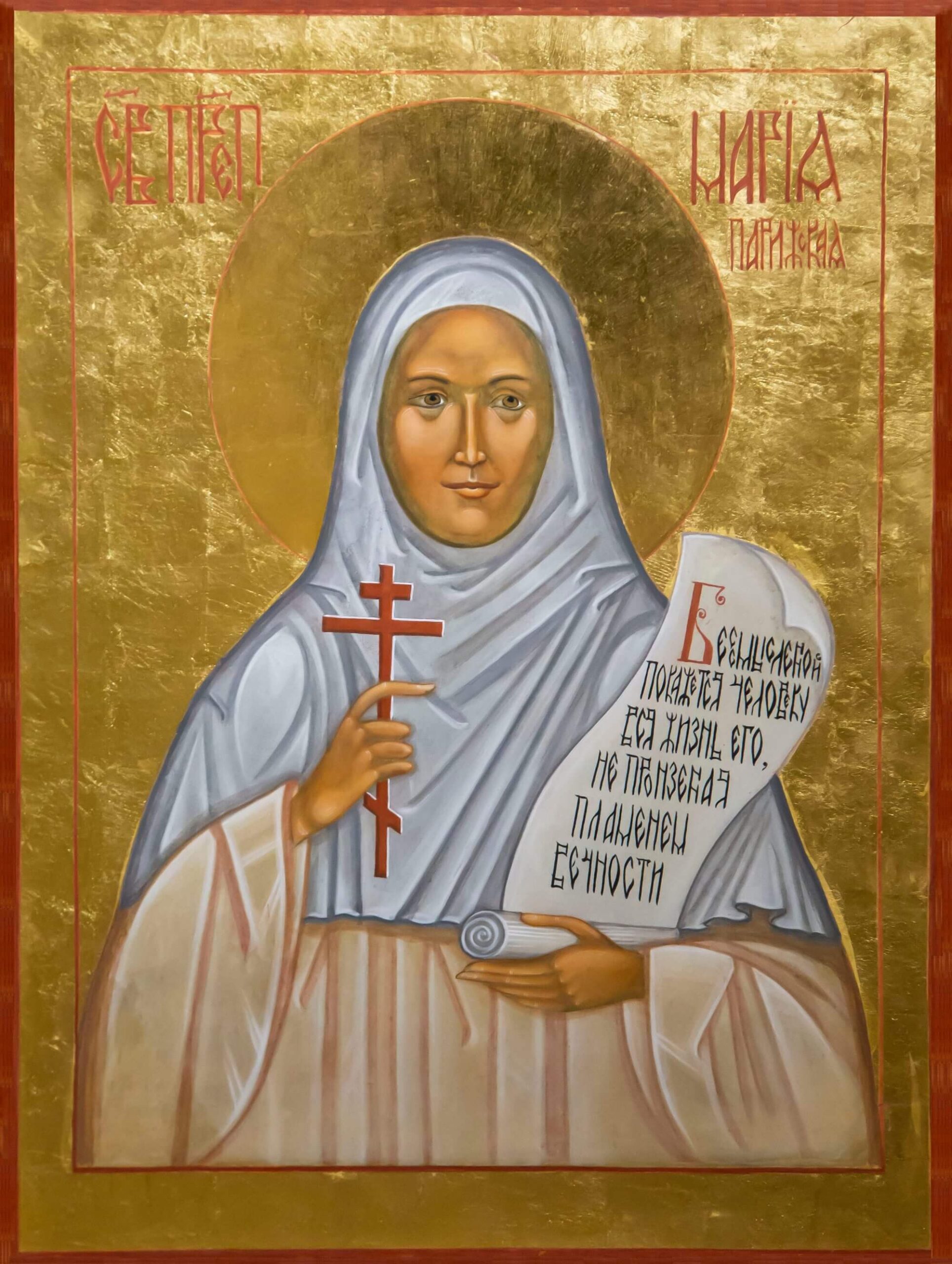
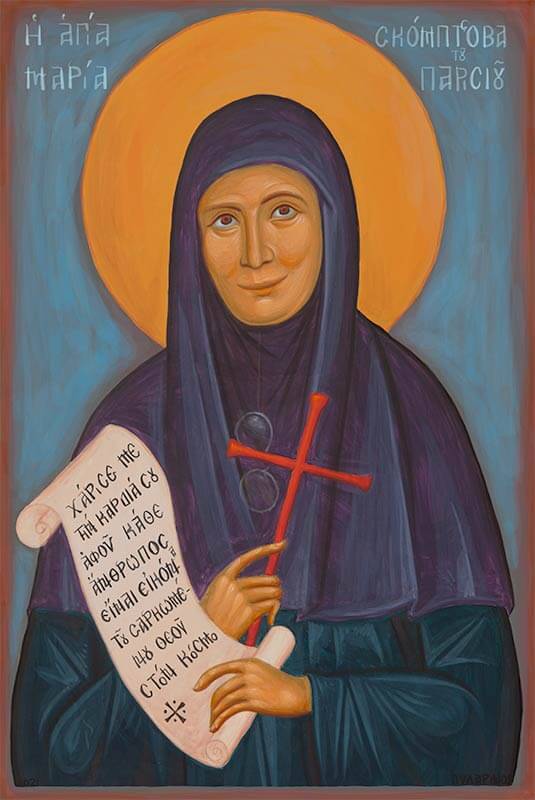
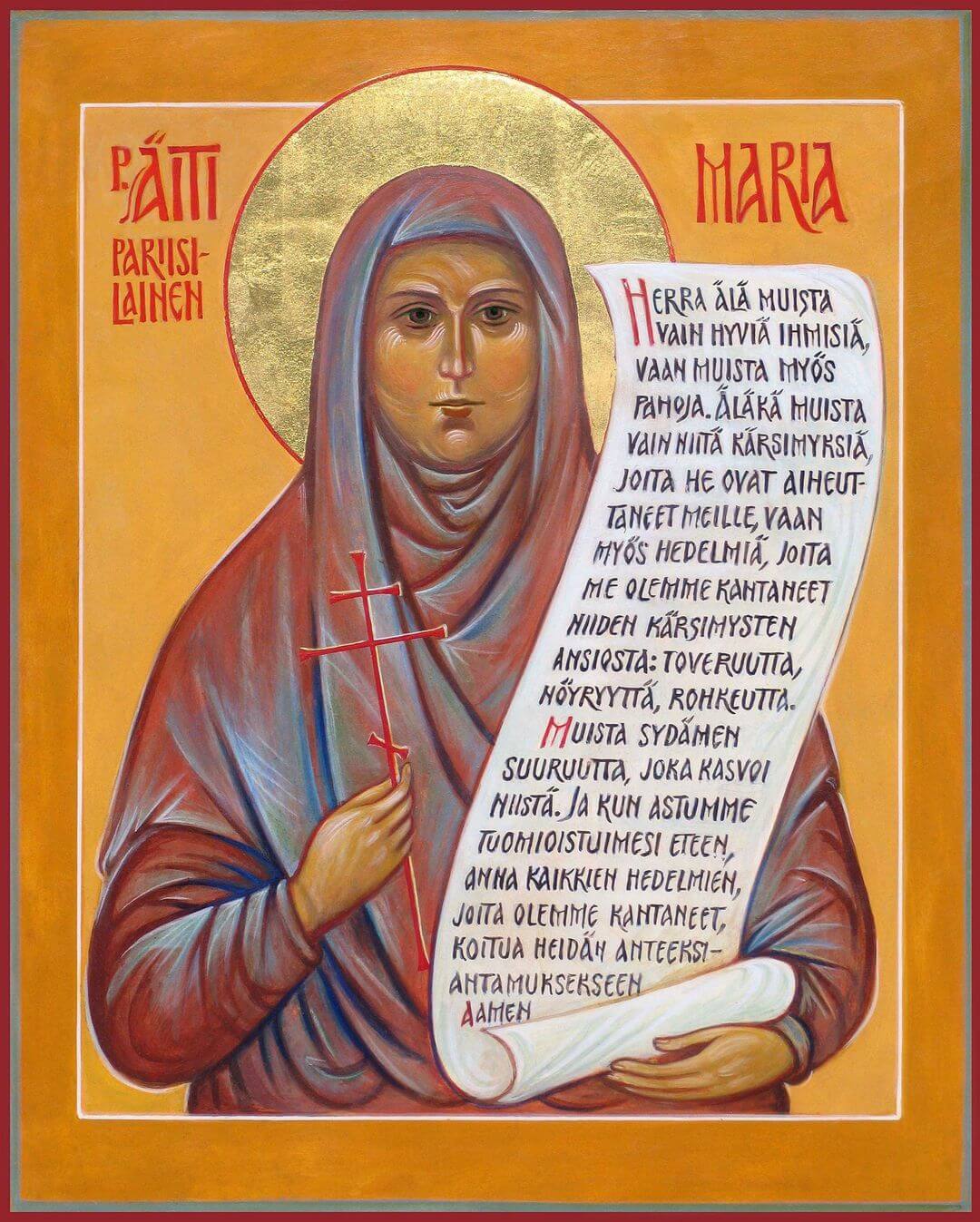
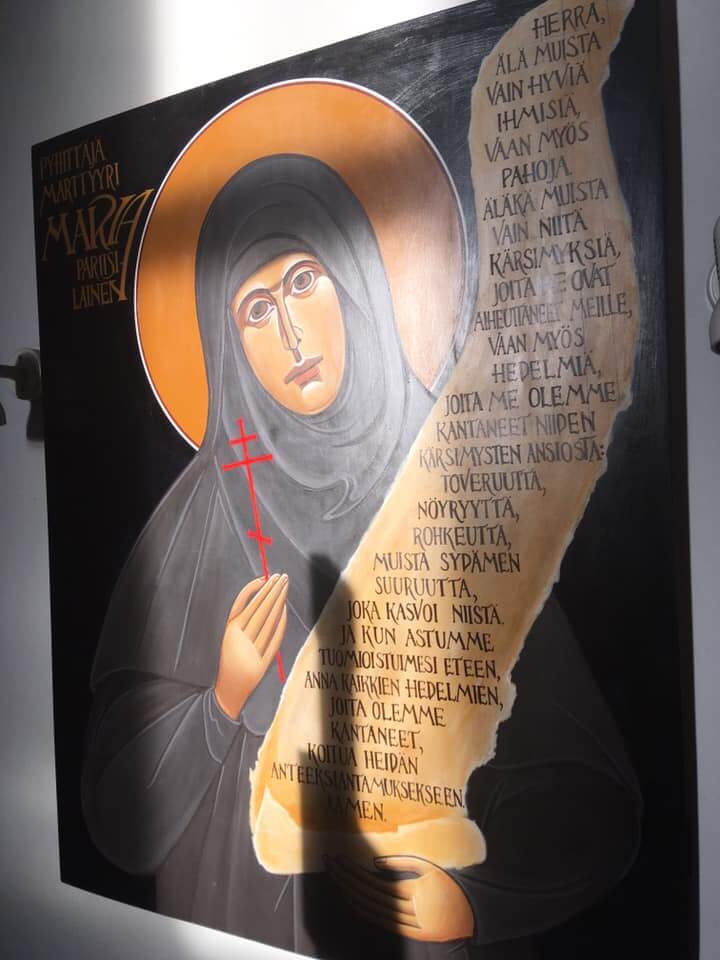

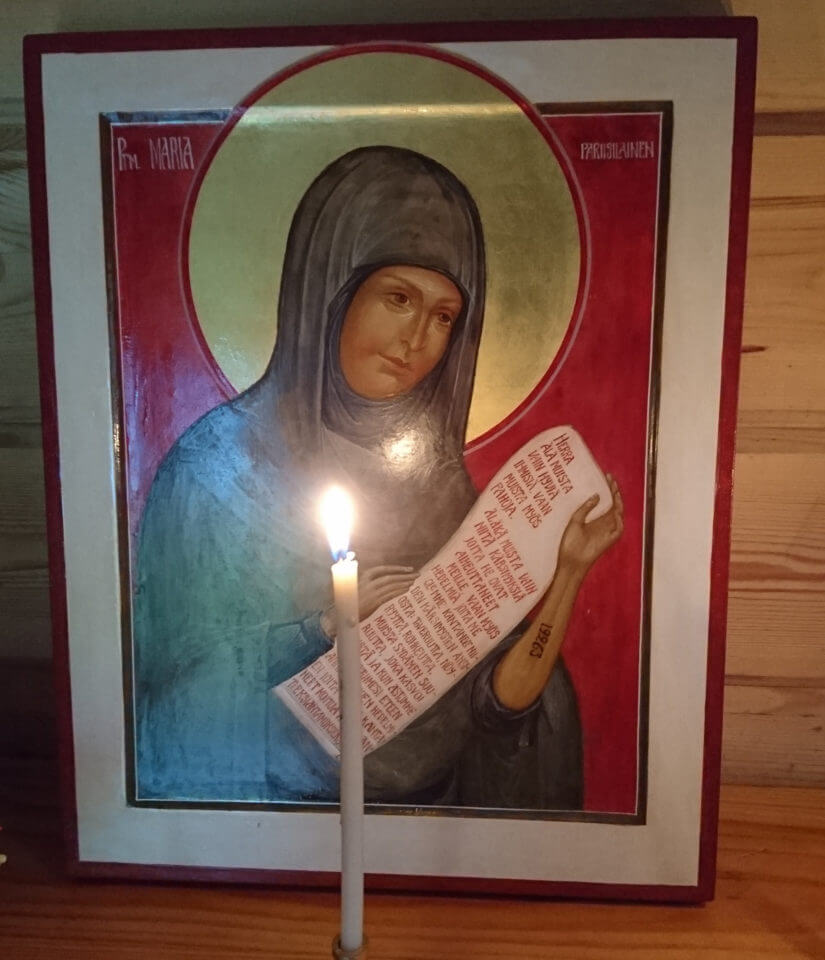
Icons
